





VOLUME 20/ISSUE 1 JANUARY/FEBRUARY 2023 PP: 255003/06831 MEDIA + PRODUCTION + MANAGEMENT + DELIVERY www.content-technology.com ISSN 1448-9554 + CELEBRATING 20 YEARS OF PUBLICATION














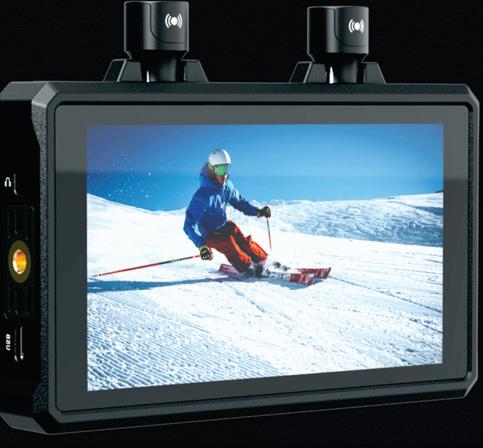



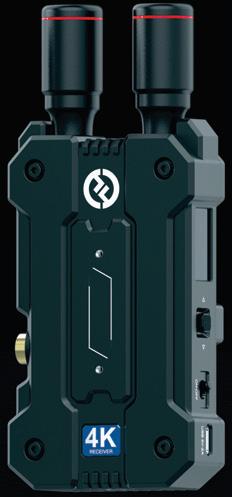
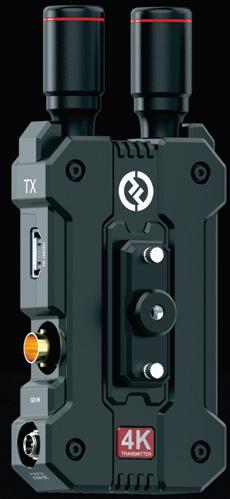
15
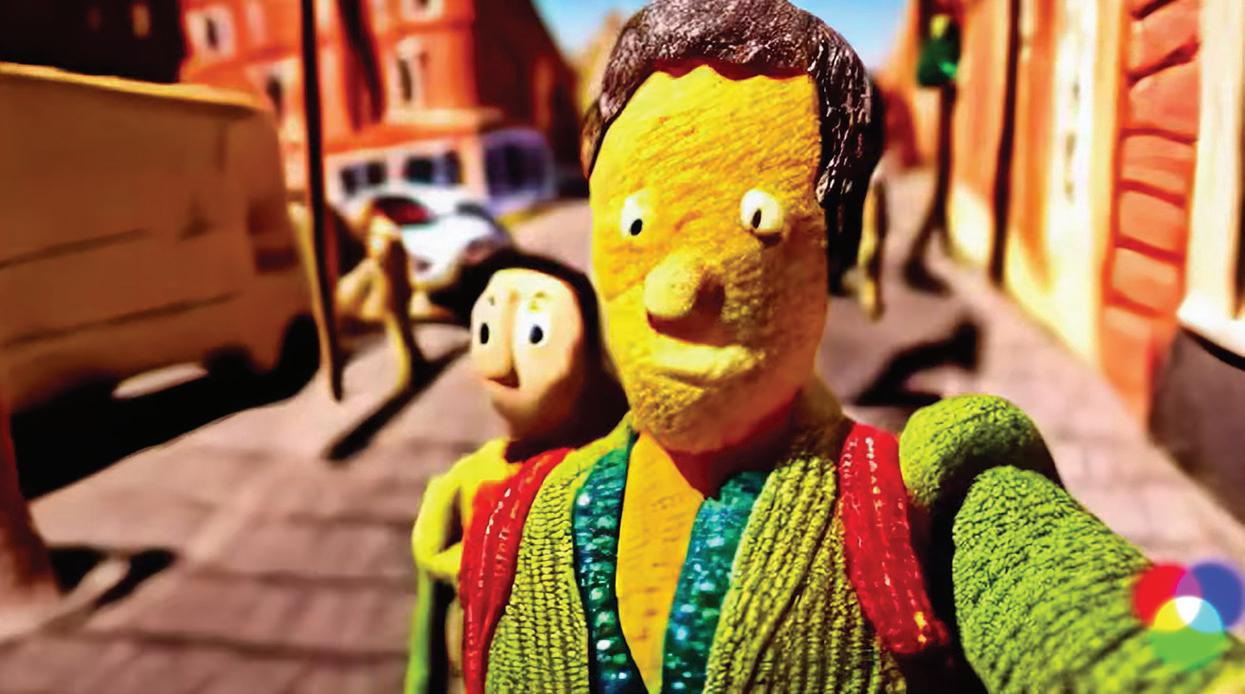
Nick Bell - the Hardest Working Camera Operator
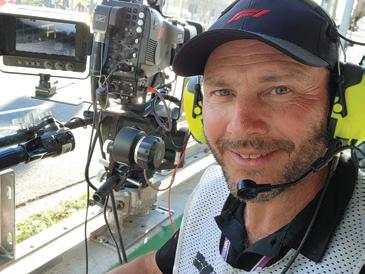
from Sony, Quasar
Gravity Media’s Long Hot Summer; Nine SCores Olympic Rights; Greyhounds and Magna Go with the VideoFlow; and Webbased Editing from EVS.
Managing Change in the Newsroom with Nuyina; disguise Opens Unreal Engine Graphics for All; Avid Updates MediaCentral; and a Story-Driven Approach to Learning Data
17
Top Universities Choose Shared Storage from Digistor and EditShare; Chello Adds Editshare Storage to its Bow; Vizrt Maximises MAM Offering with New Business Unit.
20 POST-PRODUCTION
Cosmic Dino Brings Scarygirl to Life with Digistor; Virtual Production - Netflix’s Unreal Engine Validation Framework.
23 AUDIO, RADIO, PODCASTING
Bryan Amos Talks ARN’s ACRA-Award Winning VPlayer; Positive Media Upgrades with Agile; Lawo Upgrades diamond Console, Power Core Software; Calrec Makes Switching to ST2110 More Affordable; Sky NZ Upgrades Audio with Lawo IP Technology; Comrex Ships BRIC-Link III; RØDE VideoMicro II On-camera Mic.
27 CONTENT DELIVERY
Unification, Cooperation, Interoperability and the Cloud - Steve Reynolds, President at Imagine Communications; GatesAir Expands Outdoor Transmitter Series; Telestream Lightspeed Captures SMPTE 2110; Broadpeak Achieves Video Streaming at 725Gbps; Xytech Upgrades Media Operations Platform.
CONTENT+TECHNOLOGY
ISSN 1448-9554 PP:255003/06831
Broadcastpapers Pty Ltd (ABN 34 095 653 277) PO Box 165 Surry Hills, NSW 2010, Australia www.broadcastpapers.com

PUBLISHER: Phil Sandberg Tel +61 (0)2 4368 4569 Mob +61 (0)414 671 811 papers@broadcastpapers.com

ADVERTISING MANAGER: Adam Buick Mob +61 (0)413 007 144 adam@broadcastpapers.com

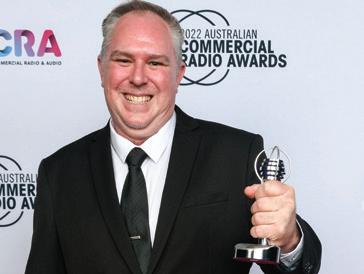
PRODUCTION MANAGER: Lucy Salmon Mob +61(0)412 479 662 production@broadcastpapers.com
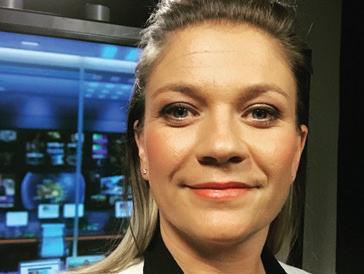
DESIGN & LAYOUT Wide Open Media Mob +61 (0)419 225 348 https://wideopenmedia.com.au
PRINTING: SOS Printing, Sydney
COPYRIGHT NOTICE: All material in Broadcastpapers’ Content+Technology Magazine is protected under Australian Commonwealth Copyright Laws. No material may be reproduced in part or whole in any manner without prior consent of the Publisher and/or copyright holder.
DISCLAIMER: Broadcastpapers Pty Ltd accepts no responsibility for omissions or mistakes made within, claims made or information provided by advertisers.
REGULARS 02 EDITOR’S WELCOME 30 INDUSTRY FOCUS FEATURES
COVER STORY RISE OF THE MACHINES AI-Generated Video & Images. 06 NEWS+PEOPLE Jellysmack - Elevating Content Creators to the Big Leagues; People on the Move. 08 CAMERAS & LIGHTING
04
Science, and more.
SPORTSCASTING
in Australia; New Gear
12
NEWS OPERATIONS
Journalism.
MEDIA
CLOUD
IN THE
15 23 VOLUME 20/ISSUE 1 JANUARY/FEBRUARY 2023
08
AI Video and Images... page 4.
Bouquets in the Stream
By Phil Sandberg
GOVERNMENT LEGISLATION notoriously lags behind technology. Look at, for example, oh, I don’t know, THE ENTIRE INTERNET. But, slowly, lawmakers do get around to imposing rules upon the operators of first-to-market tech to not only safeguard consumers, but also level the playing field with (often still influential) legacy players. The launch of the Australian Federal Government’s Revive National Cultural Policy will see Australian content obligations apply to streaming companies, just as they apply to the free-to-air sector, as of the 1st of July, 2024. You could say streaming is now finally mainstream …
This will, undoubtedly, have a positive effect on the local production industry, particularly drama production, and hopefully balance out the “reality heavy” slate of free-to-air networks.
However, there is a sector of the Australian industry that won’t necessarily see the benefits - independent cinemas. So says Damian Keogh AM, CEO of the definitely large HOYTS Group, whose company recently bought three cinemas in Western Australia that had closed their doors when Grand Cinemas went into administration. That move saved 170 jobs.

Keogh says, “The challenge for cinemas has become a content challenge. Large international studios are investing in their own streaming platforms and funding more series content, at the expense of first run films. This is a structural change that threatens the long-term viability of the Australian cinema screening industry. A lack of mid-level movies at the Australian box office, in the $5-10 million box range, is the major problem.”
“To maximise the return on taxpayers’ investment in film production,” he says, “Australian local content must be shown on Australian cinema screens. By investing in the next The Castle, Strictly Ballroom, or The Dry, and ensuring these new Australian classics have an exclusive
cinema screening window, we can promote Australian culture and support the local jobs and communities which Australian cinema screeners reflect. We can truly achieve, ‘a place for every story and a story for every place’.”
THE FADING BOUQUET?
Speaking of still influential legacy media, News Corp recently released its Fiscal 2023 Second Quarter Earnings (Q2 FY23) for the period ending 31 December 2022, including subscriber highlights for the Foxtel Group.
Now that streaming services have well and truly propelled us into the age of unbundling, the effects of customised choice are becoming clearer.
Some of the highlights reported included:
• Total Foxtel Group subscribers - 4.414 million (4.329 million paid, in an estimated market of 9.99 million households), up 10% on the prior corresponding period.
• Total streaming subscribers, including Kayo Sports, BINGE and Foxtel Now reached 2.758 million (2.678 million paid), up 25% year-on-year
• Streaming subscribers represented 62% of the Foxtel Group’s total subscribers (56% in Q2 FY22)
• Kayo Sports reached 1.136 million subscribers (1.126 million paid), up 11%
• BINGE reached 1.439 million subscribers (1.375 million paid), up 48%
• Foxtel Now reached 183,000 subscribers (177,000 paid), down 16%
There were no figures released for the Flash news service (launched in 2021), and judging from the numbers above, subscription numbers for the service are not included in these total subscription figures. Also worth noting is there is no indication how many multiple-subscriptions Foxtel Group has on its books (e.g., those who
‘ASIAPAC’
have both Kayo and BINGE).
Meanwhile, Foxtel residential and commercial Broadcast subscribers (cable and satellite) were 1.631 million (down 8%) with Foxtel Residential subscribers declining to 1.401 million. Putting a positive spin on it, the Group stated that Broadcast ARPU (average revenue per unit) rose 2% to A$83 (year-on-year), through “... a continued focus on Foxtel’s premium brand positioning.” Residential churn was stated as improving sequentially and year-on-year to 12.9%. This would indicate that cable and satellite subscription numbers have coalesced around the Group’s desired “premium demographic” and, no doubt, those for whom satellite services, for example, are a more effective channel for reception.
However, the rise in its specialised streaming subscription numbers, and the decline of both Broadcast and Foxtel Now (an OTT streamed version of the Broadcast service), would suggest a move away from the bouquet-based offerings. And, when a Foxtel Broadcast subscription comes in at AUD$74.00 per month and a Foxtel Now sub at $25.00, $45.00 or $59.00 per month, as opposed to BINGE at $10.00, $16.00 and $18.00 per month; and Kayo at $25.00, $30.00 and $35.00 per month who can blame subscribers?
And, that is not taking into account the effect on purchasing decisions of other current household economic factors such as inflation or interest rates, or even the impact of other streaming services.
To borrow a phrase, we are still midstream. More to come.
Keep safe, and look after each other, Phil Sandberg – Editor/Publisher papers@broadcastpapers.com
+61(0)414671811
2023 C+T DEADLINES
AUSTRALIA/NEW ZEALAND EDITION
MARCH/APRIL
Editorial Submissions: 21-02-23
Ad Bookings: 21-02-23
Ad Artwork: 27-02-23
ASIA EDITION
MAY/JUNE
Preview: BroadcastAsia, June 07-09, Singapore
Editorial Submissions: 10-02-23
Ad Bookings: 07-02-23
Ad Artwork: 13-02-23
For more information
www.content-technology.com
+61-(0)414 671 811
Email: papers@broadcastpapers.com
EDITOR’S WELCOME 2 EDITOR’S WELCOME
The C+T
ASIA ANZ Mumbai 03:00 02:00 01:00 00:00 15:00 16:00 17:00 18:00 19:00 20:00 21:00 22:00 23:00 24:00 03:00 02:00 01:00 00:00 15:00 16:00 17:00 18:00 19:00 20:00 21:00 22:00 23:00 24:00 Tehran Bangkok Moscow Tokyo Petersburg Hong Kong Jakarta Sydney Shanghai Beijing Seoul 16:00 17:00 18:00 19:00 20:00 21:00 22:00 23:00
(Time) Zone.
THE BRIGHTEST THE LIGHTEST
Brighter than any other 2x1 panel, yet lighter than its peers, Gemini 2x1 Hard is a beautiful paradox. Cinematic lighting with unmatched power and quality from a lightweight agile fixture.
With 23,000 lux of raw output at 10ft/3m from one 500W panel, control and modify true color quality light without compromising on your source. Effortlessly switch from an intense 20° beam to a soft wrap-around light through the supplied diffusion, with enough power for many more layers. Gemini 2x1 Hard delivers a powerful new world of creative options.
Distribution in:
Australia

Videndum Media Distribution
Australia Pty Ltd
Phone: 1300 123 325
Email: vmdau_support@videndum.com
New Zealand:
Lacklands
Lacklands
litepanels.com

Phone: (+64) 09 630 0753
Phone: (+64) 09 630 0753
Email: sales@lacklands.co.nz
Email: sales@lacklands.co.nz
Website: www.lacklands.co.nz
Website: www.lacklands.co.nz
Rise of the Machines

A SOFTWARE ENGINEER for some 12 years, Queensland-based Angus Russell is founder of NightCafe, a social network built around the creation and sharing of AI-generated imagery. Starting life as a side project, NightCafe has grown to around three million users per month who generate about a million images per day.

“It was aimed at selling people prints of AI generated art,” says Russell. Originally, it was art that I created myself with AI, and then I built the generator so people could generate their own art and then buy prints of that. It was just a side project for a long time. The AI four years ago was a different thing to what’s blowing up at the moment. It was called style transfer, where you take a content image and you take a style image and the AI will recreate the content image in the style of the style image, using pieces of the style image to recreate the content image.
“It never really made any money, it was more of a money pit for me, really, but then almost a couple of years ago now text-to-image art started coming out. It started with Open AI DALL-E version 1, which was never released to the public, but it showed people that this was possible. Then out came a couple of algorithms that were just hacked together by programmers who were just trying to do something like DALL-E. They were nowhere near as coherent or as good as DALL-E but people still loved them.
They could generate some really artistic looking, dreamlike photos back then.
“NightCafe, because I already had all the infrastructure and the website built for the previous generator, we ended up actually being the first company to make those algorithms available on an app. They were available before, but you had to basically use code to use them.
“Since then, text-to-image art, well, text-to-image generation in general has started exploding and we’ve ridden the wave. We’re still pretty well at the forefront. We’ve got the best community of users online, I would say myself.”
Visitors to https://nightcafe. studio/ can try before they buy by hitting the ‘Start Creating’ button which takes them to a choice of image generation algorithms. From there, they type in a text prompt, describing what they want the AI to create. There are also options which allow uploading an image for the AI to start from, a choice of image aspect ratio, boosting accuracy, runtime, and output resolution. Drawing on experience, NightCafe will also add words to the user’s prompt to improve the final result.
Users wanting to delve further can create an account where, through a combination of earned and purchased credits, they can tweak their original creation or create new works and share them with other users in the network, as well as order upscaled physical prints of their AI-generated art.
NightCafe’s Menu of Text To Image Algorithms
• The Artistic algorithm is the original text-to-image AI art algorithm. Its’ technical name is “VQGAN+CLIP”. “The artistic algorithm is great at producing beautiful textures and scenery based on descriptive keywords (modifiers), however the images often don’t seem to “obey the laws of physics”. For example, it’s common to see a building floating in the sky, or a repeating pattern throughout the image.
• “The Coherent algorithm is a
newer addition to NightCafe, and specialises in creating images that actually obey the laws of physics (usually). The coherent algorithm can be a little more hit-and-miss than the artistic algorithm, however most of the top artists on NightCafe prefer the coherent algorithm. The technical name for the coherent algorithm is “CLIP-Guided Diffusion”.
• “The Stable algorithm is even more coherent than the
NightCafe also archives users’ works for later access.
LIFE IMITATING ART IMITATING LIFE IMITATING …
Like the controversy in academic circles over the use of OpenAI’s open-source ChatGPT chatbot, the use of AI-generated imagery has been challenged amid accusations of plagiarism of existing artworks.
“There is a misunderstanding in some circles, it seems,” says Angus Russell. “There’s currently a class action that was launched against a few companies that are training these models. By reading the class action lawsuit you can see that they don’t understand how it works. In the class action they refer to these algorithms as a collage tool that stores a database of reference photos and then when you give it a prompt it pulls pieces out of each photo to create something new. That’s just not correct.
“When the AI learns, it learns just like you or I, it’s even got neurons and synapses. It’s a neural network. So, when it sees a photo a signal goes through the algorithm’s brain, the synapses spike in the places where it recognised something. That triggers a tiny amount of memory and five billion photos later it’s got this broad idea, like a map of the world and the concepts that
Continued opposite >>
“When the AI learns, it learns just like you or I, it’s even got neurons and synapses. It’s a neural network. So, when it sees a photo a signal goes through the algorithm’s brain, the synapses spike in the places where it recognised something”
“Coherent” algorithm. Stable is short for Stable Diffusion - an open-source algorithm and model inspired by DALL-E 2, Imagen and other advanced systems.”
• “The DALL·E 2 algorithm is an evolution of the original DALL-E by OpenAI. DALL-E kicked off the whole text-to-image scene by demonstrating that it was possible. DALL-E 2 brings a whole new level of coherence, resolution, and prompt accuracy.
“All these algorithms need to be run on very expensive hardware. Stable diffusion is somewhat of an exception, the company behind that has tuned it a lot to make it run on cheaper and cheaper hardware, but it’s still slow on cheap hardware. So, basically, if you don’t have an expensive GPU on your computer then you need to run it in the cloud somehow. So, we do that.” - Angus Russell, Founder, NightCafe.
COVER STORY 4 COVER STORY
NightCafe founder Angus Russell.
Our Cover
With apologies to George Miller, our cover image this issue is, as it says, AI-generated. We typed “scene from Mad Max Furiosa movie” into NightCafe’s Stable Diffusion prompt field and this was the result. From there, Angus Russell forwarded a 50Mb version suitable for print. Let us know what you think via papers@broadcastpapers.com

it’s seen and how they relate to the text that appeared alongside.
“So, it’s like, in my life I’ve seen a bunch of artworks and I know what a Picasso looks like. If you asked me to paint a dog in the style of Picasso, I wouldn’t be copy/pasting a piece of a Picasso image and then a piece of a dog out of my brain. I know what a dog looks like, I know that Picasso used lots of straight lines and shadows and so on to make the cubism effect, and I’d create a brand new novel image. I’m not a very good artist, so it wouldn’t look very good, but that’s the same process that the AI is taking. It doesn’t have a database of images to reference every time you ask it something. It only has this four gigabytes of knowledge, and that’s what it draws upon to create new images. It’s no different to any artist ever that has taken inspiration through all the artworks they’ve ever seen in their life. It’s not necessarily better, it just does it faster.”
As for moving images, there are already examples of algorithms being able to re-process existing video based on text prompts (see page 5), but whole short or long form programmes? According to Angus Russell, it may not be that far away.
“We can produce video,” he says. “It’s just limited to something that’s more like generating a lot of photos that flow on from each other - which is video, right? But, we’re not yet at the point where you can give it a script and have it produce a video. But, it’s definitely coming. We’re not that far away, and the people that build stable diffusion apparently think that by the end of the decade you’ll be able to watch a movie that AI is generating for you in real-time based on your interests. I actually find that really hard to believe, but those guys know more about the state of where we are and what’s coming soon than I do.”
Visit https://nightcafe.studio/
AI Rewrites Film and Video History

A CO-CREATOR OF THE Stable Diffusion text-to-image generator, AI startup Runway has released Gen-1, an algorithm that can produce new versions of existing videos by applying styles specified in a text prompt or, like a ‘Style Transfer’ algorithm for still images, from a reference image.
The company describes the platform as “video to video”. Currently, there are a number of “Modes”:



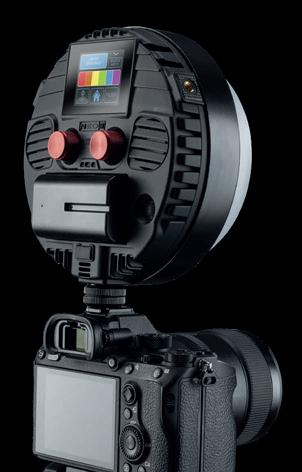
1. Stylization - allows users to transfer the style of any image or prompt to every frame of a video.


2. Storyboard - this can turn mock-ups into fully stylised and animated renders. E.g., a group of books standing upright on a table can be transformed into skyscrapers in a cityscape.
3. Mask Mode - Subjects in a video can be isolated and modified in appearance via simple text prompts
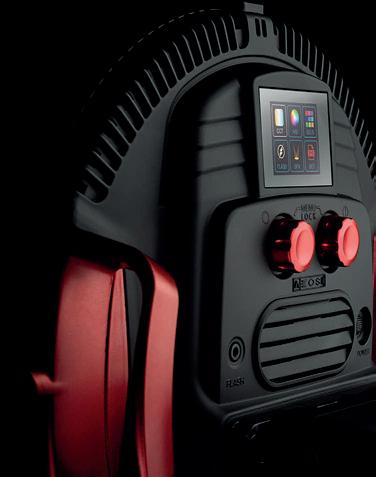
4. Render - Untextured renders (3D models) can be turned into “realistic” outputs using reference images or text prompts.
5. Customization - used to customise model for higher fidelity results
The company also has a browser-based video editor (called Runway); a tool for background removal called Green Screen; an object removal tool called Inpainting; and an invideo motion tracking solution Next on the production line, currently in Early Access release, is a new “AI magic tool” which the company says can “... edit and generate videos using a description in natural language.”
Visit https://research. runwayml.com/gen1
THE BRIGHTEST LED ON-CAMERA LIGHT EVER MADE THE LIGHTWEIGHT HEAVYWEIGHT INTRODUCING THE NEW PRO SERIES MORE POWER UP TO 25% THAN PREVIOUS MODELS (AN INDUSTRY FIRST) INBUILT FLASH RECEIVERS NOW WITH MORE GODOX, PROFOTO AIR, ELINCHROM, PIXAPRO AND NEEWER
COVER STORY
Footage of a couple walking transformed into “claymation” with Runway’s Gen-1 algorithm.
People on the Move
THE AUSTRALIAN FILM TELEVISION AND RADIO SCHOOL (AFTRS) has announced the appointment of seven senior staff who will take up new Discipline Lead roles in 2023 and the appointment of a new head of the School’s Masters program.

Juliet John is AFTRS’ new MA Screen Program Convenor. The new Discipline Leads working with Juliet in the MA program are Pearl Tan (Directing), Roland Galois (Editing), Natalie Beak (Production Design), Dr Lara Lomax (Screen Studies), Kate Stone (Screenwriting), Stephen Murphy (Sound), and Andrea Ho (Radio and Podcasting).
Acting as Discipline Lead –Cinematography is Steve Arnold and acting in the role of Discipline Lead – Producing is Bethan Bruce. Richard Welch (Documentary) and Cameron Patrick (Screen Music) will continue in their current positions as Discipline Leads. Visit https://www.aftrs.edu.au
AFTER 11 YEARS as CEO of Independent Cinemas Australia (ICA) and ICAA Services Pty Limited, Adrianne Pecotic has stepped down, but will continue her association in
the role of Special Advisor to ICA. Pecotic said, “I love independent cinemas and it is a great privilege to have been able to support so many wonderful people and outstanding businesses during my role as CEO. Now is the time to take a break and focus on my family while being available to assist ICA and our members as a consultant as needed.”
Visit https:// independentcinemas.com.au
HARRIET POWER has returned to SCA in a new role as Head Of Brand Experience across the Hit and Triple M networks and LiSTNR, reporting to SCA Chief Content Officer, Dave Cameron. In the role, she will lead SCA’s local Brand Experience Directors and teams across Hit and Triple M’s regional, provincial, and metro markets to drive audience engagement. She will also oversee the national shows and events Brand Experience team working on audience and client integration across Hit and Triple M’s biggest national shows.
Meanwhile, Stephanie Zalfelds has been appointed as Brand Experience Director – National



Shows and Events, reporting to Power. Zalfelds also has a long career working in SCA promotions. Visit https://www. southerncrossaustereo.com.au




SBS AUSTRALIA has appointed Bethan Arwel-Lewis as Commissioning Editor, Factual, joining SBS’s Unscripted commissioning team. Arwel-Lewis will work across original factual commissioning for SBS, bringing more than 20 years of experience to the role, having worked on a diverse range of projects for major networks in Australia including SBS, ABC and Seven, and in the United Kingdom with Channel 4 and the BBC.
Visit https://www.sbs.com.au







PETE FULLERTON has taken on the position of BDM - Cable at Cuthbert Stewart Ltd (CSL) in Auckland. CSL was recently appointed to represent the Belden cable range and Fullerton will focus on the Broadcast and AV markets. Fullerton was previously Business Development Manager - Emerging Markets withTechtel.


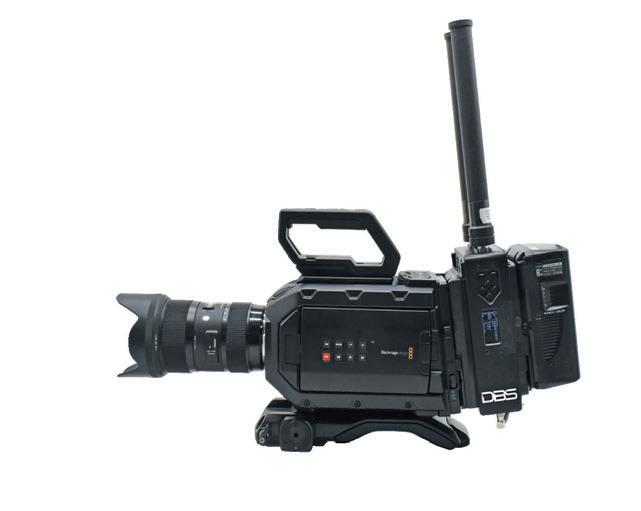

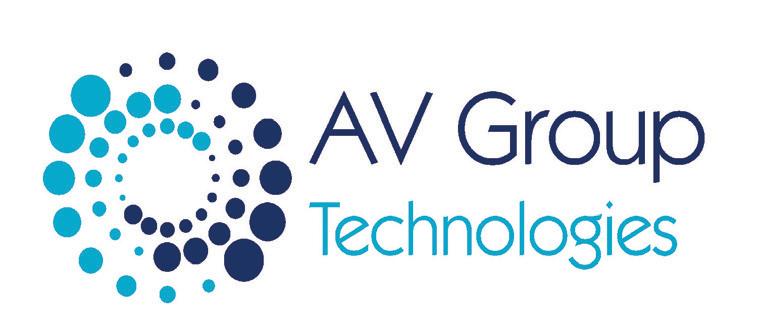
AARON KEARNEY OAM has been appointed as ABC International Development Director of Engagement and Programs at Australian Broadcasting Corporation. He was previously in the role of Broadcast Unit Lead/ Host/Content Adviser with ABC International’s “Pacific Prepared” International Disaster Preparedness program. He also currently serves as Communications Adviser for the Australia-Timor Leste Partnership for Human Development.
STEVE AHERN has been appointed Manager of ABC Radio Sydney. He previously served as Director of the ABU Media Academy with the Asia Pacific Broadcasting Union in Kuala Lumpur, Malaysia, and was also formerly Director of Radio at the Australian Film Television and Radio School (AFTRS).
TRYGVE JACKSON has taken on the role of National Sales Manager - Professional Imaging Solutions at Canon Australia. He previously held the positions of National Manager and Account Manager with the company.


6 NEWS + PEOPLE NEWS + PEOPLE avgroup.com.au Create. Encode. Distribute.
Jellysmack - Elevating Content Creators to the Big Leagues
BILLING ITSELF AS A “Global Creator Company”, Jellysmack offers online content creators distribution and optimisation tools across multiple platforms, as well as technical and financial assistance for their productions. The idea for the company was born in 2016 after founder Swann Maizil launched a football-focused passion project (now known as Oh My Goal) and used data analytics to drive growth. Teaming up with co-founders Robin Sabban and Michael Philippe, Maizil used the technology and data-led approach to build and scale multiple, crossplatform social communities - like Beauty Studio, House of Bounce, Gamology, and other Jellysmack Originals. They then expanded their scope to help individual video creators and brands do the same. The company now has over 1000 employees globally and works with over 600 creators. APAC hubs include Sydney, Singapore, Seoul, Tokyo and New Delhi. Jellysmack’s Creator Program has earned the creators on its roster - such as MrBeast, Brad Mondo, Nas Daily, Bailey Sarian, and PewDiePieover US$175 million. APAC creators on its books include: Australia’s How Ridiculous, Vincenzo’s Plate, and Slapped Ham; Junya of Japan; JianHao Tan in Singapore; and Food Kingdom from Korea. The company recently announced the launch of a production division, JellySmash Productions, giving creators access to “easy, hyper-efficient video production that can more than double monthly video output, saving creators time and driving more cross-platform revenue”.
According to Ezechiel Ritchie, General Manager of APAC for Jellysmack, even though the company’s Creator Program started repurposing long form content for shorter formats - from YouTube to Facebook and Snap - it now repurposes content “in pretty much every way”.
“We work with TikTokers, so, very short film content, and we take them onto a longer form platform, like Facebook and YouTube. We work with Twitch streamers, and they do streams of five, six, seven hours sometimes. We take that to YouTube and then to Facebook, so we’re really working every single way.”
Automating the role of the talent scout, the company has developed technology to sniff out potential recruits for its Creator Program.
“We have tech that enables us to discover creators wherever they are,” says Ritchie. “We have a tech that enables us to detect creators, and that tech will tell us - based on a lot of different parameterswhere there could be a potential for this creator, on which other platform this creator could do well, other platforms that the creator is not operating on, or a platform that the creator is not maximising.
“Then what we do with that creator, is that we obviously contact them and tell them, ‘Hey, we really think there’s a bit of an opportunity for you on Facebook because you’re not maximising the platform, and we can touch base on what that means in a little bit if you like’.
“Then we take them through rigorous testing, where we test some of the videos just to measure a lot of metrics, engagement, the monetisation, the opportunity, the audience growth opportunity, etc. If they meet our threshold, which is in their interest and our interest, then we will onboard them into our program, and we will operate their page, or their pages on their behalf. But they remain the owner of everything on that page.
“Essentially, we just ask them to keep producing content for the platform that they choose and then we do all the rest. We will put in place a content strategy using the existing video library. We’ll edit it for the new platforms. We’ll post it at specific times. We will launch marketing content to acquire new audiences to go to the page. We’ll manage the community. They don’t have to lift a finger. They just keep releasing content, and we’ll use the back catalogue and new catalogue to keep feeding onto the page and feeding to those audiences, and give them, essentially, a second business.”
When it comes to editing content for multiple platforms, Jellysmack uses a mix of human editors and artificial intelligence.
“We acquired a company called Kamua, and they really specialise in [browser-based] editing via AI. And so a lot of the editing is done automatically, but there’s always an editing supervisor for
every single creator that makes sure that everything is really on point, that the editing is right for the platform, that we take into account the best element of the original video. A video on YouTube could be 15 to 30 minutes. We have to bring it to usually three to five minutes for Facebook, so we just want to make sure that we take all the best parts of the video without losing the script and the story, if there is one. The bulk is done by AI, but there’s a lot of human elements as well, just to make sure that the editing is on point for the platform.”
Jellysmack makes its money in the form of a revenue share with the creator, usually from programmatic advertising revenue on the new platforms.
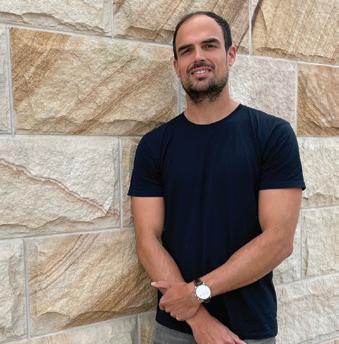
“We don’t take revenue from anything that they are already doing,” says Ezechiel Ritchie. “For instance, if a creator is already operating on YouTube, we are not going to do anything on YouTube. We will launch for them, say Facebook and Snapchat, and we’ll do a revenue share on those two new platforms.”
APAC INVESTMENT
The company’s recent announcement that it would be investing in APAC content creators is an extension of JellyFi – Jelly Financing - a fund which enables creators globally to have access to capital. The funds can be used for infrastructure such as cameras or home studios, or services in the form of editing or facility rental. Rather than creators having to repay the funds, Jellysmack will value their back catalogue, using that as the basis for the level of funding. The company then ‘licences’ that content and collects the revenue from it over the period of the licence agreement.
“That’s essentially what JellyFi is,” says Ritchie. “It’s not a loan. They don’t have to pay anything back. We take all the risk. For us, it’s really thinking about the creators and how we can support them because in turn, we are hoping that that money will go towards creating better content, and for
“We work with TikTokers, so, very short film content, and we take them onto a longer form platform, like Facebook and YouTube. We work with Twitch streamers, and they do streams of five, six, seven hours sometimes. We take that to YouTube and then to Facebook, so we’re really working every single way”

them to then work with Jellysmack in some shape or form, ideally. It’s a bit of a flywheel effect.”
While the creator economy is on the rise, Ritchie believes it is still in its infancy and yet to reach the peak of its influence.
“It’s just such early days,” he says. “We see a proliferation of platforms. We still have a lot of platforms that are not monetising with some really big creators on those platforms. I think in five or ten years’ time things will look completely different. Those creators are the stars of tomorrow. You see today on Netflix the Hollywood actors. I think in five years’ time you’ll see content creators, like the MrBeast, How Ridiculous, or the new ones that are yet to be discovered. I think it’s really exciting. And it’s just the beginning.”
Visit https://jellysmack.com/
7 NEWS + PEOPLE
Ezechiel Ritchie, General Manager of APAC for Jellysmack.
CAMERAS & LIGHTING CAMERAS & LIGHTING
Nick Bell - Heating Up Sport with a Flying Pan
AMONG THE TOP TIER of freelance camera operators in the country, Nick Bell moved to Australia some 15 years ago from the UK where a degree in sport science, a passion for photography, and volunteering for production work laid the foundation for a career in capturing the action of today’s most-watched live sporting events.
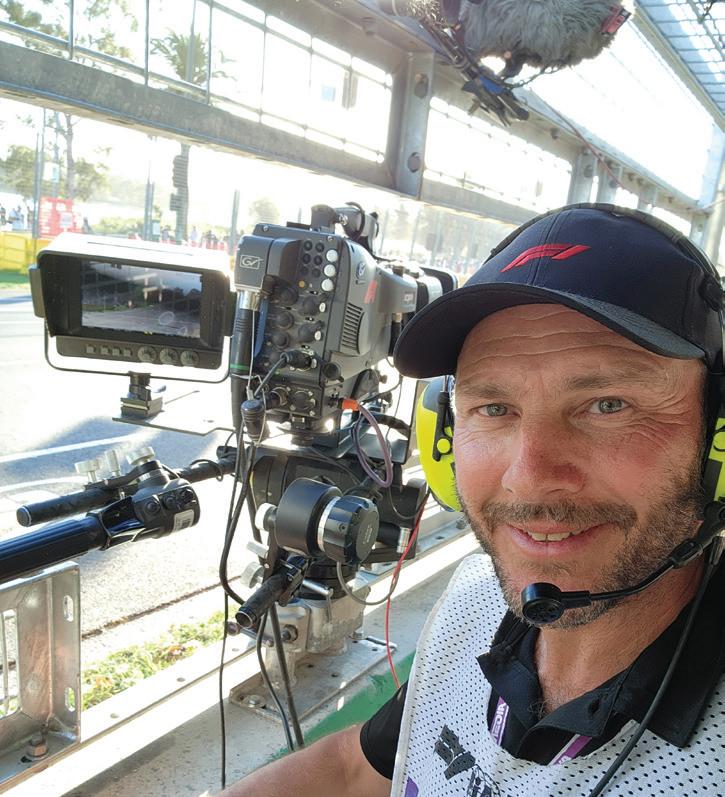
Freelancers mostly have to make use of the tools provided. Is there a variety in the technology, or is it fairly standard?

“There’s a lot of transferable skills. Most of the cameras on the bigger jobs that we do, there are multiple cameras linked to a base, usually a truck where the directors and producers sit. Those kind of cameras, lenses, setups, they’re very similar to each other. Some companies use a Sony camera, Canon lenses, Fujinon lenses; other companies use Hitachi cameras. In Formula One, they use Grass Valley. But for the end user, the camera operator, the controls are very similar.
“Some of the menus allow you to change your preferences in the viewfinder, alter them slightly and you need to remind yourself or teach yourself how to do that. But, generally you’re able to get behind a camera, zoom, focus, frictions on the tripods, they’re all very similar. So, it’s usually pretty easy to get going, and then for personalisation of how it works for you, you might need a few extra minutes or hours just to check on that.
“Other than the outside broadcast cameras, ENG cameras, where you might use those cameras for a pre-recorded show - all the reality programs in Australia are made that way - those cameras can be very different.
“They’re getting smaller and smaller but, ironically, to make them easy to use, people add cages, handles, whatever else, battery packs, so they end up being as heavy as the older cameras of bygone years. The technology is a lot more accessible because it’s become a lot cheaper to be able to buy that equipment and get great lenses. But, with those cameras, you need to know a little bit more about the technical aspect of them to set them up, to be able to get great pictures.”
Do you have any favourites?
“The most ergonomic and easy to use may be the Sony cameras, for the outside broadcast. They’re very good, easy to navigate the menus in them, a lot of them can do slow motion without any extra attachments or whatever. But like I say, it’s sort of a transferable skill. Sometimes you don’t even realise which camera body with the huge cameras, because they’re surrounded in a cage, that kind of thing, or they’ve got a huge lens on. Generally, the difference comes with the big box lenses, which can film a person’s face at the other side of a football stadium. People tend to have
a preference in the lenses rather than the cameras, at that level, which I think I would have to say the Canon lenses, I do prefer. The smooth operation of the zooming and the focusing tends to be very good. They allow a lot of light. “Obviously, at that price, they allow a lot of light into the lens anyway, so you can run them in low light. Some of the jobs we do, we can’t believe what the pictures end up looking like because it’s dusk outside or it’s almost dark, but the pictures look crystal clear and, yeah, they get very good quality. People often say, ‘my phone gets great pictures in low light’. Yeah, well, it can’t zoom in on somebody’s face 250 metres away and keep focus.”
What about camera support?
“Again, it depends on the size of the camera and the job. A lot of the outside broadcast cameras use Vinten tripod heads. We sometimes have to use virtual tripod heads which are linked electronically to graphics that can be advertising boards. They’re quite important to leave in the same position all the time, because
obviously the guys in the backend line up adverts.
“For the smaller cameras, we do use a lot of Sachtler tripods, which tend to be very easy to use. Then a more local company, Miller, is very nice to use as well. In the last few years they’ve made it very easy, especially if you’re a, they call it run and gun, if you’re on a reality style show and you’re having to set up a tripod extremely quickly to get a shot that you can reproduce. The way the legs extend on the Miller tripods is very easy.
“It depends on the job. It’s horses for courses with that kind of thing.”
Tell us about the viral video of you at the Bathurst motor races using a “whip pan” manoeuvre to keep up with the cars.
“I got involved in the supercars, which is the biggest domestic racing series in Australia. I would always like to be quite close to the track to get the action. A couple of times I got put on a camera which was in a very fast area of the

CAMERAS & LIGHTING 8 CAMERAS & LIGHTING
>> continues P10
Camera operator Nick Bell at the Australian Formula One.


9 CAMERAS & LIGHTING
track. So, previous operators might either have to come super wide to get the shot, or they forced the cut to the next camera along, or the director just didn’t expect certain cameras to be able to pan that quickly. But I would always treat it, even if it wasn’t amazing to start with, as a bit of a challenge, I’m going to try and keep that car in shot, I’m going to try and pan as fast as I can.
“There’s a lot of guys that can do it, but I would always relish the challenge. So, I got a bit of a name for, ‘we’ll put Nick on that corner because that’s super fast’. The particular video you’re talking about, they’d actually never had a camera in that position at Bathurst before. There’s a camera on the inside, which is a robotically controlled camera because it’s in a dangerous position, but on the inside of the right-hand turn, it’s an area called ‘the chase’ at Bathurst, which is the fastest corner in Australian motorsport, I think the supercars go through there about 300 kilometres an hour. “They were going to actually have a cherry picker, a high crane camera, on that corner. The funny story about that is, the cherry picker was in position and it was such a wet weekend leading up to the race, it actually sunk in the grass and they couldn’t move it. So, two days out from the big race the director makes the call to put a scaffold tower on the corner. Then the call came, and he said, ‘Nick, you know there’s now a scaffold tower there, which is a lot closer to the track than we were expecting.’ I was like, ‘Yeah’. He goes, ‘Well, I think you’re the only guy I can ask to try and get the shot up there. Can you go up there, do a little reccy and see what size lens you can pan with?’
“Obviously, a smaller lens would have been easier to have the whip pan shot, but again, like I said, I like the challenge so I put a big lens on it. It’s a huge straight approaching that corner, so it would have been nice to have a big lens so you can pick them up early, take them all the way down that straight and whip round. So, I went up there the day before we were on air and set up the camera with a big lens, and the cars were out practising. I could sort of get it, and I was reasonably pleased with how it was going, so I said, right, I’m making the call. If you’re happy, we’ll leave the big lens on for the race weekend. “It paid off. They even featured it on the telecast, the commentators, they took a shot of me from the next camera down on the course and my shot next to it. Each day the commentators were digging it up saying, isn’t this a great new angle, that’s Nick, he’ll need to go to the chiropractor on Monday morning after three days of that.”
You mentioned robotic cameras for safety reasons, and in reality TV, there’s a lot of POV cameras. What are your thoughts on those?
“There’s two types of what we call robotic cameras. A lot of them are still operated by a human being, it just means they’re on a long cable back into a truck or a room. You have a
monitor which sees the output of the picture and you operate it from a different position. That’s totally acceptable, in my eyes, because those cameras are usually in positions, like on the motor racing, it’s too dangerous to have a human being there, the equipment is expendable if a car went over the wall in that position at a very high speed and broke the equipment. Obviously, you don’t want a human being there. Even on the tennis, there’s a couple of cameras very low down, right at the back of the court which get a lovely low angle from behind either the server or the receiver, and they’re robotic.
“There are some technologies that use artificial intelligence to film a football match, for example. It may be a robotic camera which tries to estimate where the ball is, what’s going to happen, whether to zoom in, zoom out. They’re obviously self-learning, artificial intelligence. I think it depends on the budget of the show, basically. If there’s a sport that’s not being
the production side. But I think you probably get to a stage where there’s not really any replacement for actual experience, so I would probably suggest finding out which companies either own the equipment or with production companies, if that’s more the area you want to get into, find out what shows they do. Even look at the end of shows, see which companies produce the shows that you enjoy. That’s what I did, actually, when I first got involved in London, I watched the credits and, okay, this production company makes this show, I’ll find an email address for them and try and bombard companies and try and get a foot in the door in any part of the industry. It wasn’t even cameras at that level when I first started out.
“Find out which companies might be an interesting stepping stone, offer to go in for some work experience or offer to start at the bottom. I think a lot of younger people now expect to go into the industry and be working
filmed because there’s no budget to film it, and people are using that technology so a local community or a lower down division can watch a sport online, usually, at that budget, that’s fair enough.
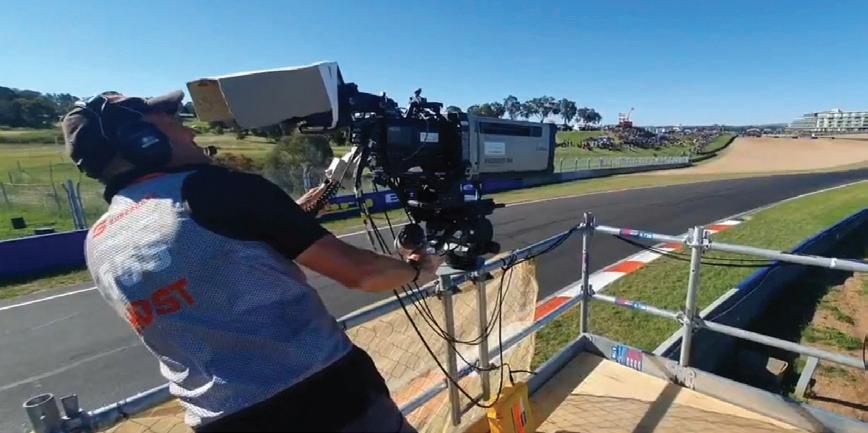
“But I don’t think that technology will ever override the human operators, especially at the higher level. I think there’s room for that kind of technology. I don’t feel threatened that one day I’m going to be replaced by a robot, thankfully, for a similar reason like I mentioned, occasionally I may override the director’s call if there’s an accident on the motor racing. I’ll go with the accident. Whereas, an AI technology which has got a tracker in a car which is always just following the same car around a track wouldn’t learn to go away from that direction and film something that may be more interesting.”
On that human element, what do you say to folk who want to do what you do?
“Studying is probably a good way of getting a broad foundation of what you may want to go into in the industry because there are so many different areas, cameras, sound, lighting,
on the best shows in the world within a very short period of time. Occasionally, you may get lucky, you may end up working for the right company and if you’ve got the skills that they appreciate you may get fast-tracked to be doing some of the really good stuff immediately. I think there’s no hiding the fact that experience takes a bit of time, and especially being at the top of the game in the technical side as well. The more you are on those kind of jobs, the better you get at them and the more secure the rest of the crew around you will feel, that if elements change you’ll still produce a good quality at the end of the day.”
To see Nick’s “Whip Pan” viral video, scan the QR code or visit https://www.youtube.com/@ contentandtechnology


10 CAMERAS & LIGHTING CAMERAS & LIGHTING
>> from P8
Nick in action at the 2021 Bathurst 1000.
Sony Brings AI Analytics to 4K IP-based PTZ Cameras
SONY ELECTRONICS IS EXPANDING its lineup of pantilt-zoom (PTZ) cameras with the addition of two 4K models with built-in AI analytics.
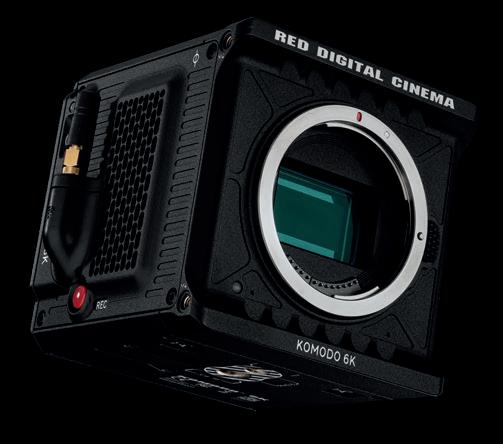
The SRG-A40 and SRG-A12 cameras automatically and consistently track, and naturally frame presenters, regardless of movement or posture, for seamless content creation and control – all without operating a computer. A new PTZ Auto Framing technology features automatic operation for quick object tracking and rediscovery, as well as multiple Auto Framing options. Highlights of the cameras include image quality with automation, the flexibility of IP, powerful zoom, remote control, and easy configuration and operation.
Sony’s built-in PTZ Auto Framing technology with AI analytics improves usability
and productivity. Multiple Auto Framing angles provide options for close-ups, waist-up or full body images. With auto operation, the cameras begin to operate as soon as the power is turned on, searching for and rediscovering an object to track. A combination of advanced and consistent recognition technologies are employed, including facial recognition which can even detect masked faces. A new user-friendly tally light allows users to easily identify which camera is actively in use and tracking movements. Both the SRG-A40 and SRG-A12 use an Exmor R CMOS sensor for high-quality, naturally vivid images with less noise that support 4K 30p and Full HD 60p. The SRG-A40 offers Clear Image Zoom technology which digitally doubles the optical zoom from 20x to 30x in 4K or 40x in Full HD, while the SRG-A12 provides up to
12x zoom. With tele-convert mode the SRG-A40 can extend up to 80x zoom, while the SRG-A12 can extend up to 24x, all while offering smooth, fast PTZ movement between camera positions. Day mode and night mode help optimise capture in brightness and shadows.
The new models offer 3G-SDI, HDMI, and IP connectivity (NDI|HX available through an optional licence) and can be controlled remotely through VISCA/VISCA over IP, using a single network cable for power, output and control. They also include Power over Ethernet Plus Plus (PoE++). Support for Real Time Streaming Protocol (RTSP) allows for remote viewing, while Security Reliable Transport (SRT) protocol enables safe, smooth, stable video streaming.
With the picture setting file
starCTRL App Delivers Lighting Design Freedom
QUASAR SCIENCE, the provider of advanced lighting solutions and a Videndum brand has announced the release of a new lighting design app for its Double Rainbow and Rainbow 2 RGBX linear LED fixtures.
starCTRL is a free iOS app that users can download from the Apple App Store. It allows users to control colour and effects parameters of up to seven Rainbow series lights from an iPhone or iPad.
starCTRL allows users to adjust the control parameters, presets, and lighting effects of Rainbow fixtures remotely with a quick to configure Bluetooth connection. With the Rainbow lights in starCTRL Mode, the app will quickly Auto-discover all lights and be ready to control in seconds.
“The starCTRL app lets you quickly and easily
set your lights.” said Quasar Science CTO, Ben Dynice. “With its intuitive interface and wireless capabilities, users can control multiple parameters for multiple lights directly from the iOS device, eliminating the need for DMX or complex lighting consoles for simple lighting setups.”
Three tabs within the app control all features. The Control Tab allows users to control intensity, color temperature, plus/minus green, hue, saturation, and output. The Preset Tab contains several pre-configured color settings for quick selection, and the FX Tab allows users to control built-in lighting effects and parameters to tune the lights to their exact requirements.

Other features in the starCTRL app include the ability to save and recall favorite colors
feature, users can quickly set up and duplicate menu settings from camera to camera. The new models’ PTZ motion sync feature enables smooth and rapid PTZ movement to a target position at a maximum ±170° pan/ tilt angle range. Pre-set recall allows for quick transitions from one camera to other pre-set angles. A picture freeze preset can also be used to hold the last image captured in place, as the camera moves – eliminating blurry transition shots and minimising distraction. Additionally, virtual webcam driver software can turn up to five connected cameras into collaborative conference and lecture tools using a computer to provide professional image quality during web-based meetings.
Visit https://www.sony.com.au or https://www.sony.co.nz
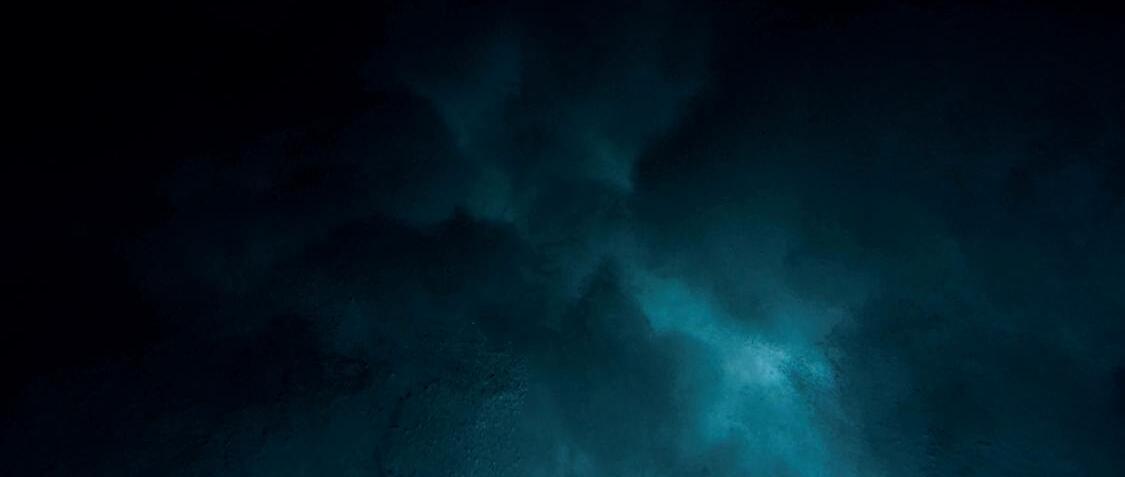
and effects and a simple to use drag-and-drop function to create groups allowing control of multiple lights at the same time. Users of the app can also control the level and speed parameters for fades for smooth transitions. Find out more about starCTRL in the introduction video: https://youtu.be/ gJZI1ArJomw
starCTRL for Double Rainbow and Rainbow 2 fixtures is available as a free download from the Apple App Store: https://apps.apple.com/gb/ app/starctrl/id6444952715
Firmware v0.8 for Double Rainbow and Rainbow 2 fixtures is available as a free download from the Quasar Science website: https:// help.quasarscience.com/rr-r2/update-rr-r2firmware
Visit https://www.quasarscience.com
11 CAMERAS & LIGHTING CAMERAS & LIGHTING
Proudly distributed in Australia by
COMPACT CINEMA CAMERA FEATURING RED’S UNPARALLELED IMAGE QUALITY, COLOR SCIENCE, AND GROUNDBREAKING GLOBAL SHUTTER SENSOR TECHNOLOGY IN A SHOCKINGLY SMALL AND VERSATILE FORM FACTOR.
Blonde Robot
®
6K, GLOBAL SHUTTER, small form factor
Nine Wins Rights for 2024-2032 Olympic Games
THE INTERNATIONAL OLYMPIC COMMITTEE (IOC) has announced that Nine Entertainment Co. (Nine) has been awarded Australian exclusive free and subscription audio-visual rights, and non-exclusive audio rights to the Summer and Winter Olympic Games from 2024-2032. Commencing in July 2024 with the Olympic Games Paris 2024, Nine will provide Australia with a front row seat to the next five Olympic Games, including Milan (2026), Los Angeles (2028) and the yet to be announced 2030 Winter Games, all leading up to Australia’s return to hosting an Olympic Games in Brisbane in 2032.
Nine will bring the Games to audiences via its diverse streaming, television, audio and digital platforms, across 9Now, Stan, the 9Network, and talk radio stations 2GB, 3AW, 4BC and 6PR. Coverage will also be delivered across Nine’s suite of print and online publishing platforms: The Sydney Morning Herald, The Age, Brisbane Times, WA Today, The Australian Financial Review, and nine.com.au.
IOC President, Thomas Bach, said: “Australia is a great sporting nation with a long Olympic history which will be taken to new heights with the hosting of the Olympic Games Brisbane
When it Comes to Sport - there’s no Resisting Gravity

THE 2022-23 SUMMER PERIOD has been a big one for live production and media services provider, Gravity Media Australia.
The company was host broadcast company for the FINA World Swimming Championships (25m) in Melbourne from December 13-18, 2022, producing more than 48 hours of live coverage and delivering the complete turn-key global television production. The company deployed two high definition broadcast trucks, as well as DSNG vehicles, more than 30 cameras, including specialty and robotic cameras and drones, and a crew of 110 to deliver coverage across major international broadcast platforms.
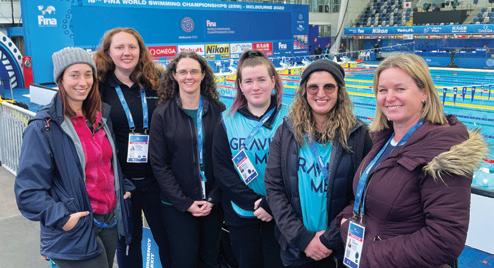
A key component of Gravity Media’s production was the audio with the company bringing together an all-female crew to deliver on this important undertaking.
Jessica Paynter, Kelly Doherty, Janine Moorley, Joanna Atalla, Aster Caplan and Amy Harkom formed the team delivering all aspects of audio production for the global host television production for the Championships. Amy –mentored by Jessica as part of Women in Broadcast Operations mentoring programme at the RMIT in Melbourne – joined the team for the event.
Jessica Paynter, Audio and Communications Engineer at Gravity Media Australia said, “It’s great being able to go from being ‘the woman in audio’ to just one of the women in audio. Finding women in technical roles has become commonplace. This was only a matter of time. We hope this encourages other women to go into all technical departments, not just audio.”
Santos Tour Down Under
The Santos Tour Down Under which took place from January 13-22 brought male and female UCI WorldTour professional cycling teams to race on the streets of Adelaide and across regional South Australia.
For a third time, Gravity Media Australia was appointed by organising body Events South Australia as the ‘host’ broadcast company for the
Tour Down Under. Gravity deployed high definition outside broadcast trucks and satellite units, more than 20 cameras, including on-board ‘chase’ motorcycles and coverage from the air with helicopter and drone cameras, and a crew of up to 150 to cover the Santos Tour Down Under as it travelled almost 1000km across South Australia.
Australian company Flying Features supplied Gravity with aerial feeds using LiveU’s HD live video transmission and remote production solution. The feeds were streamed live to Gravity, with the workflow adding flexibility and a backup path during periods when RF-receive helicopters were refuelling.
LiveU’s LU600 field unit was used on the helicopter with external static antennas, aerially approved, fixed to the outside of the helicopter. The aerial footage complemented Gravity’s live coverage on the ground.
Adam Huddlestone, co-owner of Flying Features, said, “LiveU doesn’t need line of sight so we could go as low as we wanted. We used LiveU for the whole race, four hours each day, following all the cyclists from the sky. We were really happy with the performance throughout the week, going from 0 to 500 feet, with only a one-second delay.”
Gravity also deployed specialist broadcast technology and communications services through its Globecam business, acknowledged for its development of specialty miniature cameras and RF communications solutions.
As the production company for the event, Gravity created, produced and delivered the complete television production of the Santos Tour Down Under for the world. This encompassed 40 hours of live coverage and the production and delivery of a daily highlights programme for Australian
2032. Our new partnership with Nine will ensure Olympic fans across Australia have unparalleled coverage of the Olympic Games on their platform of choice.”
Mike Sneesby, CEO of Nine, said: “This partnership with the IOC is an important part of Nine’s strategy as we continue to define Australian broadcast and streaming television. We’re delighted to be bringing the Olympics Games to Australian audiences, whenever and however they choose from Paris 2024 to Brisbane in 2032.”
Visit https://www.nineforbrands.com.au/
and international audiences, including viewers of Australia’s Seven Network.
Summer of Tennis
This year’s Australian Open tennis tournament (January 16-19) saw Gravity Media undertake its 9th year as the broadcast and technology solutions partner for Tennis Australia for the Australian Open in Melbourne, and its 19th year as the host broadcast technical provider for the entire event.
Gravity created and managed 1080i, 1080P and ultra high definition coverage across multiple courts and the entire precinct, and ensured the delivery of these multiple signals to the host broadcast along with unilateral feed requirements for Tennis Australia’s broadcast partners.
Across the entire precinct, there were 165 cameras including Sony HDC 3500/4300 channels along with various robotics solutions using Sony P43, Hitachi DKH 200 and Panasonic robotic cameras with Mark Roberts PTZF heads. The entire precinct was covered with receive sites allowing 16 roving RF cameras to work anywhere within the venue, plus two remote RF robotic cameras delivering broader views of Melbourne.
The production facilities were housed at Tennis Australia’s headquarters. These facilities were connected via 500 metres of fibre to the
SPORTSCASTING SPORTSCASTING 12 SPORTSCASTING
>> continues P14
Gravity Media’s audio production crew at the 2022 FINA World Swimming Championships (25m).
Greyhounds and Magna Go with the VideoFlow
TRADITIONALLY, BROADCASTING from remote or rural racing tracks, without DVN connectivity, has required a digital SNG solution – something that comes at a considerable financial cost. When Greyhound Racing NSW (GRNSW) looked for an alternative, reliable and cost-effective solution for its Taree venue, it found one from Magna Systems and VideoFlow.
Greyhound Racing NSW’s Brad Adam said, “GRNSW was looking for a cost effective alternative to deliver our vision from regional areas. Magna provided a VideoFlow solution which we tested for over six months. While much cheaper than DVN, we also found it to be faster than SNG and the testing proved to be a huge success. We have now implemented this as a permanent solution at Taree where a single operator can plug in, Magna can provide support if needed and the quality of picture delivery has been excellent. Paul Maroni and the Magna team provided an easy one stop solution for all our needs and we are now expanding that solution to other regional tracks. This means that, through Magna, we also have the added benefit of being able to package up our vision and audio and deliver it to partners all around the world in whatever format that they require.”
VideoFlow is driving the evolution of digital video contribution and distribution to conventional baseband and IP networks. Leveraging its Emmy award-winning technologies, VideoFlow products and solutions enable professional broadcast companies, including TV broadcasters, TV operators, teleports and content providers, to broadcast live with confidence over any IP network, including the public Internet.
Web-based Editing from EVS

IPD-VIA CREATE from EVS is a web application that allows users of EVS’ end-to-end live production asset management (PAM) solution –MediaCeption Signature – to access a non-linear editing (NLE) tool all within the same platform for faster and more efficient operations.
With MediaCeption Signature, users can perform all the content management and media workflow functions from ingest to playout. They also benefit from complete end-to-end workflow orchestration and comprehensive system monitoring, all accessible from within a single interface. IPD-VIA Create, is the latest application to join the IPD-VIA web-based PAM platform that is at the core of the solution.
The application was designed in collaboration with Blackbird, developer of market-leading cloud native video editing platform, and is fully integrated into EVS’ ecosystem, providing instant
As Magna group sales and marketing manager, Paul Maroni, explained, “By combining the NBN and VideoFlow’s unique technology we were able to use a business grade service to deliver high quality video from Taree Racetrack very reliably.”
Critically, the VideoFlow solution Magna implemented for GRNSW also provided a backup path should the NBN drop out, or if there was too much data traffic.

Maroni continued, “We implemented a 4G backup and load sharing workflow through VideoFlow. This means that whilst the default data settings are split between the NBN and 4G networks, should either one drop out then the other will take 100 percent of the stream. The stream is relayed at Magna HQ in Sydney and then seamlessly stitched together at the receiver’s end – in this case, Telstra Broadcast Services (TBS). The end result is that we’ve managed to repeatedly achieve zero packet loss across the circuit with a one second plus improvement in latency over SNG, all at contribution quality.”
Taree Racetrack is the first of four sites that will implement and use the VideoFlow system and this, in turn, means that GRNSW will no longer
require expensive satellite and SNG services. With these cost savings, the moment the VideoFlow system is installed at any location, GRNSW can increase the number of race meetings at that venue, and also its revenue.
Magna’s VideoFlow system for GRNSW consists of a portable rack, UPS, NBN connectivity, a VF server and a 4G modem and antenna.
Paul Maroni concluded, “With the new system in place at Taree Racetrack, the feed comes from the local video production team, passes through our VideoFlow solution on its way to Magna and then TBS who distribute it to any chosen channel at that point. Magna has total inbound control and has provided GRNSW with a high quality, reliable and cost-effective managed service.”
Visit https://magnasys.tv/product/videoflow
access to all content through an easy to navigate browser-based interface. As a result, users can work with their assets from anywhere in the world and immediately view and push edited content to craft editors or directly distribute it in broadcast quality to multiple channels.
IPD-VIA Create provides an easy-to-use 9×16 video framing effect, a powerful colour correction feature, and the choice between Thumbnail and Timeline displays, which will appeal to beginners and experienced editors alike. It is the perfect toolset for storyboard editing, enabling journalists and producers to begin drafting the first cut of their stories while the action is happening.

These storyboards can instantly be exported as is, while at the same time more experienced editors can pick up these projects and continue to refine them in the timeline view, using
common industry methods and familiar keyboard shortcuts.

As part of EVS’ VIA platform, users can benefit from the central workflow engine – VIA Flow – by exporting their sequences to any destination, be it Play to Air, social media or any other target deemed necessary. The IPD-VIA Create sequences are instantly available in craft editing solutions, such as Avid Media Composer or Adobe Premiere Pro.
Finally, by leveraging Blackbird’s cloud-native technology, the application further extends the overall flexibility of the MediaCeption solution, and speaks to EVS’ Balanced Computing vision, as it can easily be deployed either on-premises or in the cloud, depending on the needs of the production.
13 SPORTSCASTING SPORTSCASTING
Magna’s VideoFlow system for GRNSW consists of a portable rack, UPS, NBN connectivity, a VF server and a 4G modem and antenna.
Visit https://evs.com
Get your products on the desks of key industry decision makers in print and online. FOR OUR ADVERTISING RATES AND OPTIONS Contact Adam Buick adam@broadcastpapers.com or +61 (0) 413 007 144 OWN THIS SPACE!
central apparatus room. The production facilities consisted of seven production galleries using Kahuna Maverick panels and six audio control rooms using Calrec Artemis audio consoles. Gravity Media also used ten ViBox vision mixer systems to provide coverage on the ten outside courts.
To achieve system connectivity, Gravity Media used an IP-based large ‘fly away’ system with a level of base band systems to provide a system that was effectively a 3900 x 3500 video router. An integrated audio solution between Audio Live and Calrec cores delivered the ability to route over 2500 audio signals within the facility.
All slo-motion replays plus archiving and media management was delivered using 25 x EVS servers, 52 x EVS IPDs, 16 x XT Access, 3 x X Files plus 4 x DB Servers. During any day’s play, Gravity Media delivered 25 to 45 streams to the 900 Tb of storage on site which allowed all the action to be accessed by the host and unilateral broadcasters. Gravity Media also supported Tennis Australia in providing facilities for the United Cup mixed teams tournament in its inaugural year, as well as the Adelaide International.


The United Cup – held in Brisbane, Perth and Sydney – saw Gravity Media provide in each city outside broadcast production trucks and facilities accessing 28 cameras and multiple EVS replay and edit suit facilities, along with the Xeebra replay system for use by teams and players.
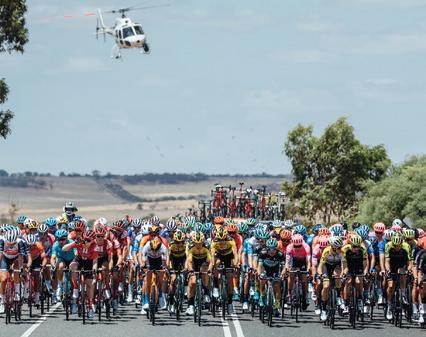
Additional bespoke “fly away” production systems were used in Sydney to draw together coverage from multiple cities to create an integrated and produced “world feed” for delivery across multiple broadcast and subscription platforms in international markets.
The Adelaide International accessed one of Gravity Media’s state-of-the-art HD production trucks and the company’s specialised “fly away” production
solutions coupled with 27 cameras across multiple courts to deliver bespoke coverage feeds for Tennis Australia and its domestic and international broadcast partners.
LIQUI MOLY
February 3-5 saw Supercars Media and Gravity Media tackle Australia’s internationally acknowledged LIQUI MOLY endurance race at the iconic Mount Panorama track in Bathurst, NSW. 2023 marked the 8th year for Gravity Media’s broadcast facilities and technology collaboration with Supercars Media. Gravity also has a long partnership with Supercars Media in the television production of the Repco Bathurst 1000, and in the Repco Supercars Championship Equipped with 52 television cameras on-track, in-car, in the pits, around the track, embedded in concrete kerbs and walls, and accessing HD outside broadcast facilities, 16km of broadcast cable and a production crew of 100, Gravity and Supercars Media captured every moment for Fox Sports, Kayo, the Seven Network and 7plus across race weekend.
Coverage of the race was also broadcast on Sky Sports NZ and globally on YouTube through SRO’s “GT World” platform and other streaming partners. Radio Show Ltd, the home of Radio Le Mans, also carried the international video and audio feed coverage.
Sydney Autumn Carnival
As the warmer weather retreats, Gravity Media will be back in the saddle with all-screens coverage of the Golden Slipper at Rosehill and The Championships at Royal Randwick as part of the Sydney Autumn Racing Carnival.
The Carnival will build on Gravity’s January delivery
of the Magic Millions Carnival on the Gold Coast, as well as the 2022 Melbourne Cup Carnival, which was Gravity Media’s 21st in the delivery of broadcast and technology solutions across Derby Day, Melbourne Cup Day, Oaks Day and Stakes Day. Gravity was also engaged for the coverage of the Caulfield Cup, Caulfield Guineas and Cox Plate. Across the Sydney Spring Racing Carnival, Gravity Media was entrusted with the Epsom, Silver Eagle, Everest, Spring Champion, Golden Eagle and Ladies’ Day, along with The Big Dance.
Gravity accessed more than 47 cameras and a crew of 150 across October and November in delivering broadcast and technology solutions for the coverage of horse racing carnivals in Australia. The Sydney Autumn Carnival across March and April will be broadcast on the Seven Network. Visit
14 SPORTSCASTING SPORTSCASTING
https://www.flyingfeatures.com https://www.liveu.tv and https://www.gravitymedia.com/au
>> from P12
The Santos Tour Down Under.
NEWS OPERATIONS NEWS OPERTAIONS
Managing Change in the Newsroom
IT’S ONE THING TO INTRODUCE new technologies to a broadcast operation, but it’s entirely another thing to manage workflows and workplace practice to realise the potential of those technologies. Nowhere is this truer than in the fast-paced environment of the newsroom.
As someone who has facilitated the roll-out of new technologies in a variety of newsroom environments, Emily Dawson is well-placed to help guide newscasters exploit the potential of their investments via her new venture, Nuyina. Pronounced ‘noy-yee-nah’, the word means ‘southern lights‘ in palawa kani, the language of Tasmanian Aboriginals, and is an apt title for a consultancy aiming to illuminate the issue of change management for newsrooms.
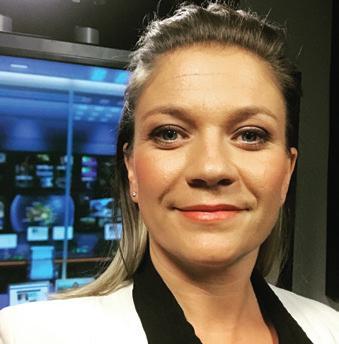
According to Dawson, “One of the things that we’ve seen with technology changes in newsrooms, particularly moving to the cloud and bringing tools in that fundamentally change the way that newsrooms operate, is that there’s a missing piece of the puzzle that’s actually hugely important, and that is the human aspect of the technology change.
“Technology teams are very good at bringing in new tools and managing that process, they’re very experienced in that, but talking to users and understanding the way the change impacts on the workflow, and setting the newsroom up for success on the tools, is where we come in.”
A bridge between technology teams and end users, Nuyina has brought together experienced change and project managers who’ve worked across not just media, but in other industries as well.
“Coupled with that we’re also working with experienced editorial and production people who acutely understand the pressures that newsrooms face and can take a step back and look at workflow design as well,” says Dawson. “We can see that a technology change in the newsroom absolutely needs strong change management to go with it to make it a success, and I think that we’re really at the stage now where some of the new tools are really about simplification, and also allow for a rethink of the operating model of the newsroom.
“In the past, technology teams have very much dictated what tools we used, and exactly which tools and buttons needed to be pushed, and in what sequence. But, the new breed of cloud-native tools often allow for some creativity around how they’re used, and editorial has much more of a say in how workflow is designed. That means that the communication between technology and editorial needs to be very clear, and quite often we have found that they are speaking different languages. It’s all about aligning the vision and outcomes, and this is where Nuyina comes in to help.”
According to Emily Dawson, the last 30 years have seen technology in newsrooms increase in complexity simply because the pace of change in terms of delivery platforms has been so rapid.
“What that’s meant,” she says, “is technology teams have really had to bolt on new bits of technology on the old bits of technology. We started with radio and live broadcast tools, and now we’ve got a plethora of different tools inside the newsroom that service all of your social media endpoints, your monitoring, and all the different ways that we need to output content now.
“They are definitely taking into account this new breed of tools, and the movement to the cloud which allows for all kinds of disconnected workflows and remote working. But, what it also means is that we can fundamentally look at each part of our workflow in the newsroom and say, ‘does this still serve us, and is this something that we want to carry forward into the future?’ Operating model design and workflow design is an area that newsrooms can begin to look at now because we can almost start from a clean slate again.”
That clean slate, says Dawson, begins with how clear the organisation’s vision is, and how committed all the stakeholders are in that process.
“Nuyina consultants understand how to bring the organisation along and what needs to be put in place, even before a specific technology is selected for a desired outcome,” she says. “So, the place that we really start is, ‘where are we going and how are we going to get there?’ It’s even before we start talking about the details of how the
workflow and how the technology is going to work.

“We look at a specific outcome that the newsroom wants to achieve, and then it is very much about auditing exactly what we are doing now and how we can do that better in the future. So, there is a bit of business analysis and process documentation in that process. What we’ve seen is that newsrooms have had tools sneak in that are not necessarily documented. Journalists will often find a hack, they’ll find a tool that serves them for a particular purpose, and it’s about documenting those processes and looking at how we can bring that into a formal process within the business. It really is about formalisation of process, and really bringing everybody onto the same page because the last thing we want is that a particular process in a newsroom has been established by a particular person, then that person leaves and someone else has to figure out how to do it all over again.”
Another focus for Nuyina is that of the story-centric workflow, particularly with regard to consistency of brand and audience experience.
“Given that we’re aligned with Stem Media and the companies that they represent, specifically the newsroom control system DiNA, we talk a lot about story-centric workflows,” says Dawson. “So, telling a story, thinking of a story as something that goes across all platforms. We often talk about the 24-hour cycle of a story, and whether that be through the linear broadcast, through the tweets, through the Facebook posts, through the CMS, these are all pieces of one whole story.
“When we have fragmented technology within the newsroom, and we’ve seen this in some of our customers from Stem Media, that one of the things that a newsroom wants to achieve by bringing in a story-centric way of working is to create a consistent message for a story when it comes to a viewer’s or a reader’s perspective.
“We look at a specific outcome that the newsroom wants to achieve, and then it is very much about auditing exactly what we are doing now and how we can do that better in the future. So, there is a bit of business analysis and process documentation in that process. What we’ve seen is that newsrooms have had tools sneak in that are not necessarily documented”
“At Nuyina, we can see there’s a huge wave of change coming to newsrooms. The innovation in newsroom technology is now moving fast, after many years where, fundamentally, not much changed. Products are reaching end of life and now, with a mature cloud environment, many technology teams are looking at how the cloud can help to make the newsroom more agile, flexible and, of course, easily allow for remote work which, in the past, was very difficult. I feel like Nuyina definitely fills a niche that we’ll see more and more need for change management in the future.”
Visit https://nuyina.com.au
15 NEWS OPERATIONS
Emily Dawson, Founder of newsroom change management consultancy, Nuyina.
disguise Opens Unreal Engine Graphics for All
DISGUISE HAS RELEASED Porta 2.1, an update to its integrated software solution that lets users easily manage Unreal Engine graphics directly within their existing workflows – now with their latest News Room Computer System (NRCS) integration through MOS protocol.
With its new NRCS integration, Porta 2.1 users can control real-time graphics more intuitively than ever before through enhanced data sharing. Easy template creation tools mean journalists can build unique graphics from the newsroom without a designer’s help – even if they’ve never used Unreal Engine before.

Both in-house and remote teams can also take advantage of precise scheduling features that take the guesswork out of production while automating manual tasks with macros, previewing Unreal Engine live using Pixel Streaming, and much more.
With the disguise platform also being Unreal Engine “Avalanche ready”, anyone in media production can now move to a disguise ecosystem with confidence that it will support their journey to a new and exciting aesthetic. Whether it’s for augmented reality or virtual production, broadcasters can also use Porta 2.1 to take advantage of the tools of the future.
Porta 2.1 is fully compatible with disguise’s xR solutions, which can display realistic 8K content onto an LED set the size of a football stadium. disguise’s creative services teams at Meptik
and disguise Labs are also available to Porta users around the globe that want to design fully-integrated extended reality workflows. Additional benefits for users include:
• Stress-free teamwork –Journalists, producers and directors can all collaborate and create graphics in their newsroom rundowns, which can then be approved for graphics operators to play out from Porta.
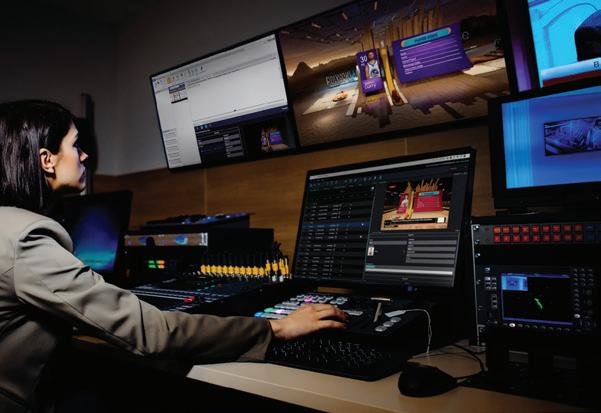
• Easier workflows for operators – Operators can easily customise their workflow and automate their show with new visual macros and scheduling widgets. They can customize their Porta UI even further by color coding their playlist and workspaces. Through macros, they can even create playlists from data and reduce manual entry.
Story-Driven Approach to Learning Data Journalism
REPORTING DATA-DRIVEN stories means following a process. That’s according to Mike Reilly and Samantha Sunne, authors of Data + Journalism, a book which takes you from A to Z, from acquiring data to scraping, cleaning, analysing, writing and visualising data.
The book also addresses how to share data and build public trust with data, as well as interviews with top data journalists, training videos and hands-on exercises to elevate your data storytelling.
Newsrooms also can benefit from the book.
Early and mid-career professionals looking to expand their skills will find the chapters easy to digest and the hands-on exercises practical and applicable to topics journalists cover today.
The book offers insights into data journalism from a global perspective, including datasets and interviews with data journalists from countries around the world. Emphasised by examples drawn from frequently updated sets of open data posted by authoritative sources like the FBI, Eurostat and the US Census Bureau,
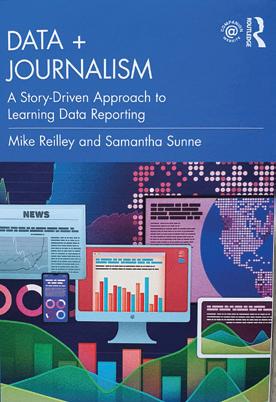
the authors take a deep dive into data journalism’s “heavy lifting” – searching for, scraping and cleaning data.
Combined with exercises, video training supplements and lists of tools and resources at the end of each chapter, readers will learn not just how to crunch numbers but also how to put a human face to data, resulting in compelling, story-driven news stories based on solid analysis.
Mike Reilley teaches data and digital journalism at the University of Illinois at Chicago. He is the founder of https://www. journaliststoolbox.org.
Freelance journalist Samantha Sunne teaches data and digital techniques to journalists, and specialises in data and investigative stories.
The book is supplemented by a companion website.
Visit https://dataplusjournalism.com
• Faster deliveries – Broadcasters can search particular graphics and allocate them to the right part of the story, cutting out repetitive tasks and making delivery times faster.
Porta 2.1 will be available as a SaaS subscription, providing simple access and unlimited scalability.
Visit https://www.disguise.one
Avid Updates MediaCentral
REPORTING DATA-DRIVEN Avid has released updates to its MediaCentral workflow platform, including the new MediaCentral | Acquire IP-based ingest scheduler, along with remote collaboration and improved hybrid working support. These capabilities are designed to empower media companies to accelerate production on-premise and in the cloud. The introduction of MediaCentral | Acquire adds ingest management to MediaCentral | Cloud UX, advancing Avid’s news production solution by enabling content production teams to collaborate from anywhere.
To keep up with the growing demand for content, broadcasters need to automate their workflows more efficiently. Avid’s new MediaCentral | Acquire ingest scheduler app in MediaCentral | Cloud UX automates ingest scheduling for SDI and IP sources by controlling FastServe | Ingest, FastServe | I/O and MediaCentral | Stream. MediaCentral | Acquire also supports Edit While Capture workflows for faster turnaround, while enabling ingest management from anywhere using only a web browser.
This release also builds on MediaCentral’s media production capabilities with new features like the ability to synchronise content across different sites with MediaCentral | Sync and a redesigned MediaCentral | Collaborate mobile app.
Visit https://www.avid.com
16 NEWS OPERATIONS NEWS OPERATIONS
Top Universities Choose Shared Storage from Digistor & EditShare

SHARED STORAGE ENVIRONMENTS are critical to the successful operation of all modern-day education institutions. At the top of that tree are some of Australia’s oldest and most prestigious universities, including the University of Sydney and the University of Technology Sydney (UTS), both of whom use EditShare storage solutions supplied by Digistor.
As the University of Sydney’s Manager, Media Production, Deputy Vice-Chancellor Indigenous Strategy and Services, Tom Cavdarovski, explained, “Our media team has grown over the last few years and our post-production workflow has changed to meet the growing demands. We use EditShare systems and find them particularly suitable for a growing production slate.”
UTS’ Client Computing Manager Faculty of Arts and Social Sciences, Simon Prowse, agreed saying, “The Faculty of Arts and Social Sciences (FASS) runs courses in communications including journalism and production. These courses include sound production, film and animation. In the past FASS used a different shared storage solution but decided to move to a more open environment for production workflows. UTS has now been using an EditShare solution for around nine years and has recently acquired new EFS storage and FLOW licences for student off site usage for editing.”
For the University of Sydney, the requirements were centred around a secured, robust, 4K editing storage solution with Cavdarovski adding, “We have huge amounts of 4K data that needs to be accessed across multiple editors. Our content is captured on-country with drones, C300 and DSLR cameras. We also produce multicamera live stream events, so having a postproduction system workflow that integrates with creating pre-packaged content, is an important part of our workflow.”
In UTS’ case, the university required a sizeable amount of storage capacity and bandwidth to handle up to 60 concurrent connections for editing from personal and group project spaces on the server.
Prowse said, “This time around we chose 10GB ethernet with 20GB link aggregation to a 10GB switch. Since COVID there is more need for flexibility and a need for more students to work remotely. We also have students studying remotely overseas so the need for working from the server remotely was important. As most of the editing is done with Adobe, the Premier plugin was desirable.”
It’s clear for both universities that the EditShare solutions for education shared storage environments are a vital part of their courses and day-to-day operations as Cavdarovski explained, “The EditShare system Digistor installed has RAID redundancy, integrates with existing university infrastructure and allows our editors to work in various 4K resolutions
seamlessly.”
Prowse echoed this sentiment saying, “It’s a flexible arrangement for constantly changing circumstances. Openness and flexibility of the solution is important and EditShare meets this perfectly. Courses and requirements change and we can easily add capacity, bandwidth or capabilities with plugins.”
The University of Sydney uses a 98TB EFS 300 system with eight client PC connections. These are both Mac and Windows computers, all connected via 10Gb network ethernet connections and all editors are able to open Adobe Creative Cloud projects at any time. EditShare’s cloud platform EditShare FLEX has evolved to a suite of turnkey, ready-to-go solutions for remote collaborative workflows and video editing in the cloud. Users of EditShare FLEX choose the modules they need – including edit in the cloud and multi-premises synchronisation – and implement them in their own cloud account. This gives users an easy opportunity to implement cloud solutions which education institutions often consider the best way to utilise a combination of on-premise and cloud storage and editing.
There are many on premises and cloud solutions at UTS. They run an animation render farm for the faculty that is on server blades in the data centre and processing of jobs is distributed to around 300 lab computers. UTS also has an HPC environment as well an Isilon which is widely used across the university. The faculty EditShare EFS can backup to Isilon which represents a cost saving to leverage other products in the EditShare solution.
Workflows are obviously at the core of these solutions as Cavdarovski explained, “We have a mix of projects throughout the year, some are quick turnaround with a single producer and editor, while others are 12 months in post and up 50 individual videos with shared resources across multiple editors.”
Prowse added, “We keep our workflows reasonably basic. EditShare is the file server for students’ media work. The workflows involve group spaces for group projects and these have a set folder structure. Students also have personal scratch space with quotas. Class materials are in spaces accessible to students from either the lab and suite facilities or on their BYO devices accessible from home via the client and VPN or on campus.”
A UTS shared storage workflow may also involve students borrowing faculty sound, lighting and video equipment and doing a shoot. They will then upload content to EditShare via a lab or studio computer.
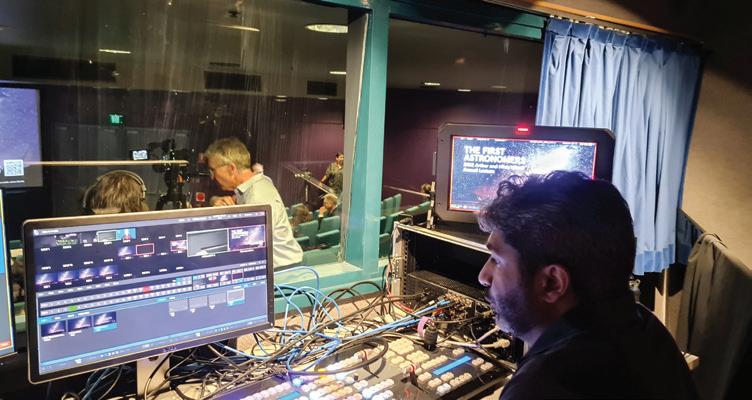

Whilst Prowse said, “We feel that EditShare has a flexible and future-proofed product that is not proprietary or rigid. It’s modular so we are not paying for capabilities that we do not need now but have the option to add capability, licences or services going forward. Lots of storage capacity in the EditShare solution is important and being on premise, we can leverage the fast network for connections, transfers and backup.”
When asked to explain what edge using the EditShare solutions Digistor provided gave their university, Tom Cavdarovski concluded, “The EditShare system enables our team to work more efficiently, reducing menial tasks and streamlining complex workflows. This frees the team up to work in more creative and innovative space, which in this industry, is a what customers and partners want from content producers. Our experience with Digistor has always been very professional, I have been purchasing post-production systems for over 20 years and they understand how to work with clients who work in large complex organisations, like a university.”
Visit https://editshare.com and https://www.digistor.com.au
MEDIA IN THE CLOUD MEDIA IN THE CLOUD 17 MEDIA IN THE CLOUD
Chello Adds Editshare Storage to its Bow

CHELLO IS AN AGENCY that believes the role of brand has never been more important. It also bridges the gap between brand and content and promotes the ethos that when you know who you are as a brand and what you represent, what you say and what you create all becomes a lot more meaningful.

Chello also adopts a similar forward-thinking approach to its technology and data storage solutions, which recently it upgraded with Digistor and EditShare.
As Chello co-founder and Creative Director, Tristan Velasco, explained, “We had just moved to new offices and figured it was the right time to upgrade our storage solutions. Previously, we were using Synology NAS’ but we knew we needed something that was more reliable at much higher speeds – particularly to be able to edit 4K+ footage. We had been speaking to a number of agencies that we knew in video production and EditShare had been mentioned a few times. When we got in touch with Digistor, it was the one they recommended as well, so we felt confident enough that it would be the right system for us.”
Due to the calibre of its work, Chello’s requirements were significant. The company had installed 10GB ethernet cables across its office, so each workstation could support that connection speed. Thus, the storage solution also had to be up to the job, especially when Chello’s creatives had to work on video projects
directly from the server.
The company also required automated backup and archive solutions, via Archiware, in order to be able to easily back up and archive projects. Then the storage solution had to be easily scalable and everyone in the agency needed to have remote access to the server through the company’s network.
Velasco added, “Put simply, the EditShare solution easily met all of our requirements and we are yet to even maximise how we use EditShare FLOW.”
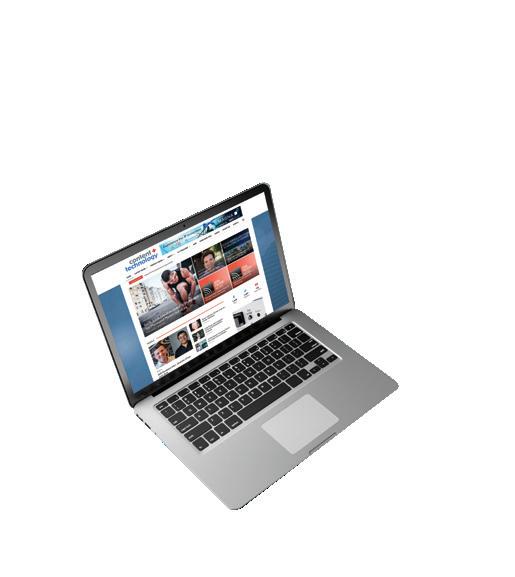
In total Chello purchased EditShare’s EFS software defined ecosystem and EditShare FLOW media management for its data storage solution and daily workflow.
Typically, the company uses EFS to store all recent and live projects across video, animation and design and manage all project files via a templated folder structure. This contains all raw footage and source files including photography, 3D assets, illustrations, all project files and their various versions, delivery files across video, animation and design and production related files.

Velasco continued, “When we were researching the benefits of EditShare I remember other solutions being in the mix but, based on the recommendations from Digistor and our own subsequent research, we felt EditShare was by far the best solution that met our needs at the time and into the future. The main thing
Vizrt Maximises MAM Offering with New Business Unit
VIZRT, THE PROVIDER OF software-defined visual storytelling tools, has announced the creation of an Enterprise Media Asset Management (MAM) Business Unit for customers of its flagship MAM system, Viz One. Used by many of the world’s biggest broadcasters and media organisations, Viz One is a critical, and central piece in media
to solve challenges. With the formation of this business unit, and the range of talent behind it, run by Jochen, I am excited to see how this investment will deliver an outstanding customer experience,” remarks Daniel Nergård, Chief Revenue Officer at Vizrt Group. Harnessing Vizrt’s top MAM talent across the organisation, the Enterprise MAM Business Unit combines R&D, Professional Services, Support, and Commercial into one team to improve efficiency, drive collaboration and ignite innovation through increased collaboration. The Enterprise Media Asset Management business unit will provide an end-to-end service, from sales through to end-user training, to the world’s largest broadcasters and media companies. The team will be led by Jochen Bergdolt, whose 20-year experience in
for us was how smart EditShare products are and how the entire EditShare solution was put together for us by Digistor. We had a really clear idea on what it needed to do based on our requirements above and it met all of those requirements.”
According to Velasco, the EditShare solution and relationship with Digistor give Chello a clear edge as he concluded, “From a technology and workflow perspective, the edge EditShare gives us is primarily around the speed at which we are able to work on projects requiring really large file sizes, the security of our backup systems and archive systems. It’s second to none. We’ve been working with Digistor for many years now and without having an IT department, the team that we work with there really feel like they’re an extension of our team. In other words, Digistor are an absolute 10 out of 10 for me.”
Visit https://editshare.com and https://www.digistor.com.au
the industry and technical knowledge makes him a valuable addition to the team. In fact, half of Bergdolt’s career was spent at Vizrt. He began as a Senior Solutions Architect successfully navigating MAM deliveries for important international customers. Bergdolt worked his way up to become the Head of MAM Sales Operations SEMEA and ultimately the Director of Product Management, Infrastructure at Vizrt before diversifying his experience in other ventures, including consulting for start-ups. Now back at Vizrt to unite the Enterprise MAM team, Bergdolt is known by many and well suited to hit the ground running to optimise and elevate Viz One for customers. Visit
MEDIA IN THE CLOUD
Chello co-founder and Creative Director, Tristan Velasco.
https://www.vizrt.com/products/viz-one Join Us Online! for advertising opportunities contact adam@broadcastpapers.com https://content-technology.com

19 19 MEDIA IN THE CLOUD MEDIA IN THE CLOUD Scan the QR code to find out when you can meet us in person in Sydney
POST PRODUCTION POST PRODUCTION

Cosmic Dino Brings Scarygirl to Life with Digistor
COSMIC DINO STUDIO was formed to produce high-quality animated feature films and TV series for award-winning clients from Australia and internationally. Recently the studio undertook the production of a CG-animated feature film adaptation of the award-winning graphic novel Scarygirl, made for theatrical release around the world for Passion Pictures Australia and Like A Photon Creative. For this project, the studio not only had to significantly scale up their number of employees, but also their animation, rendering and post-production solutions and for those they turned to Digistor.
Cosmic Dino Studio co-founder and director, Ryan Greaves, explained, “It was a monumental task to find the right talent and resources which is why we relied on the brilliant services of Digistor to provide us with the right number of animation, rendering and post-production solutions.”
For the Scarygirl project, Cosmic Dino Studio provided end-to-end production solutions creating all the work from the art department and storyboarding all the way through to lighting and compositing and final render.
Their production pipeline to provide this service was primarily focused on Autodesk Maya, for asset creation across characters, environments, props and rigging, as well as for CG cinematography and blocking and 3D animation.

Their lighting department utilised Maya for its lighting and completed its compositing in Blackmagic Fusion 18 and some work in Adobe After Effects.
Rendering was completed in Redshift by Maxon, utilising the company’s powerful render farm for the highest quality results.
Cosmic Dino Studio co-owner/co-director, Ricard Cussó, added, “Digistor provided us with all of our Autodesk Maya licenses and we had up to 40 artists working with purchased licenses
at a time. Digistor also provided us with our Fusion and Redshift licenses, really efficiently dispensing more Redshift licenses if we needed more render power during some of the heavier months of production. We have been really impressed with the quality of images Redshift has produced, yielding really impressive results for our feature film, which was produced on a limited budget and making it look significantly more expensive.”
Across the entire production pipeline, Cosmic Dino Studio purchased Adobe Photoshop for its art department, ToonBoom Storyboard Pro for its storyboard team, Adobe Premiere Pro for its editorial team and Autodesk Maya for its asset, layout, animation and lighting teams. They also purchased Blackmagic Fusion 18 for their compositing team as well as Adobe After Effects for smaller, incidental effects and Redshift by Maxon to render out every single frame of the film.
Cosmic Dino Studios’ animation workflow for CG-animated feature films is a very regimented, structured process to get to the final image. They start with the script, traditionally created by an external client and writer, break it down for their art department to start drawing designs of characters, sets and worlds to then provide work for their asset team to start building this world and characters in 3D.
Greaves said, “Consecutively, our storyboard team will be breaking down the script into scenes and drawing out every single shot of the film to showcase to the directors the blocking and framing of every single beat of the story. Once finalised, these storyboards will be shipped off to our editorial department which will edit them in Adobe Premiere Pro into something called an animatic. This animatic utilises these storyboards as well as scratch voice recordings of characters, sound effects and temporary music to create and pace out scenes in rough forms, to show to the directors what the final
scene might look like. This animatic also acts as the bible for every department from that moment on.”
Once the animatic has been finalised, this is shipped down the studio’s bespoke and highly efficient pipeline to their layout department who take the storyboards and match the camera framing of them within Maya in 3D space. They in turn ship that to the animation team who will study the performance of the voice actors and will bring the inanimate 3D characters to life, adding nuance and flair to their movements. This is then shipped to the lighting and compositing team who add digital lights to each set the characters are in and they render out the final image, using a mountain of computer processing power to see all the departments’ hard work combined together.
Cussó added, “It is a long process when you break it down but we run an incredibly tight ship at Cosmic Dino Studio that produces world-class animated feature films on very tight timelines. In terms of animation solutions for CG-animation, Autodesk Maya is still the industry standard and is what the majority of artists in the industry utilise. It is a powerful tool that can really bring characters to life. Redshift by Maxon is still our golden child when it comes to CG rendering. We have tested a number of different rendering solutions for our feature film productions but Redshift has always beaten out the competition, due to its crisp image out of the box and low render times, which is essential for our type of productions that have fast turnarounds and hard deadlines. Blackmagic Fusion is our compositing software of choice as it’s cost-effective yet powerful, providing artists with a node-based interface that they’re used to with other more expensive programs but still providing them with impressive features to produce stunning imagery.”
Visit https://www.digistor.com.au
20 POST PRODUCTION
Virtual Production — A Validation Framework For Unreal Engine
By Adam Davis, Jimmy Fusil, Bhanu Srikanth and Girish Balakrishnan - Netflix

Game Engines in Virtual Production
THE USE OF VIRTUAL PRODUCTION and real time technologies has markedly accelerated in the past few years. At Netflix, we are always thrilled to see technology enable new ways of telling stories, and the use of these techniques on some of our shows like 1899 and Super Giant Robot Brothers has given us a front row seat to this exciting evolution in filmmaking. Each production that deploys these methods is an opportunity for the crew, tech manufacturers and usthe Netflix Production Innovation team - to learn, innovate and collaborate towards a common goal: universally accessible workflows that will enable creative opportunities and technical success for all filmmakers regardless of the size, location or scope of their project.
Game engines have been a major part of driving the democratisation of advanced virtual production techniques such as pre-visualisation and in-camera visual effects. While these platforms were initially
developed to build games, their open and versatile design and development environment offer other capabilities. In the hands of film and TV artists and technicians - combined with techniques and technologies such as LED Panels and tracking systems - they’ve become powerful creation tools for filmmakers.
The incredible depth and flexibility of game engines also means there are infinite permutations and combinations of configurations and settings available to the operator. But not getting the configuration right can have a significant impact on the results. Could we harness the benefits of this depth and flexibility while also supporting the predictability and repeatability expected from high pressure shooting environments?
Or put more simply: could we offer productions a shortcut to achieving the right configuration for their scenario every time?
The Netflix Production Innovation Team is always asking itself versions of this question:
“How do we ensure a high level of creative opportunity and flexibility, while achieving technical
consistency and quality? How do we reduce the potential for accidents and errors, while making sure artists and technicians still have the agency to stay true to their vision and their practice?” One past approach to enabling excellence while mitigating risk has been creating knowledge resources for our productions and partners, while also working with the industry to develop standards and best practices. But in this instance, the open development framework of the game engine itself, as well as its central place in Virtual Production workflows, offered another compelling solution.
The Validation Framework as Helper, Teacher and Enabler
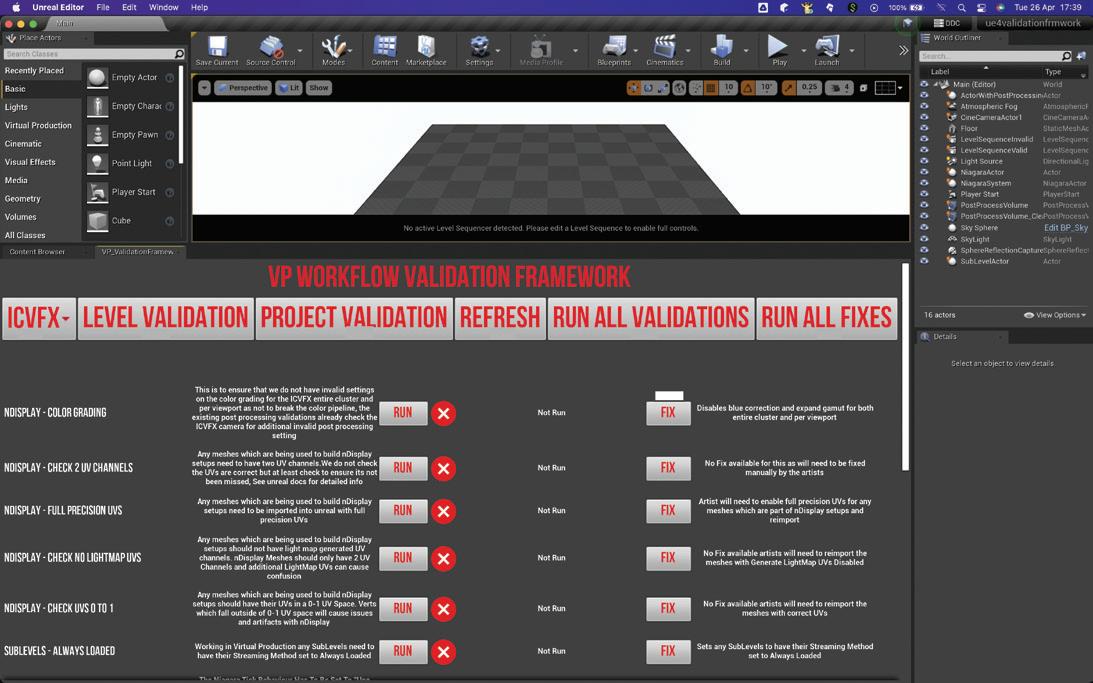
Many large scale operations use quality control methods and validation frameworks to ensure successful outcomes. Validation frameworks can act as a flexible and unobtrusive assistant, while offering a safety net for the operator. We’ve had success with this type of validation in the past with Photon, which acted as a library, reference implementation and validation tool for IMF
packages, the delivery format for all of our Netflix original programming.
An excellent validation framework is designed with the following characteristics:
• It is informative and instructive, providing useful information as to why an issue has arisen, what problems will be caused if not resolved, and what can be done to resolve it.
• It acts as dynamic documentation, a checklist, and a co-pilot to allow the operator to focus on the creative aspects.
• It promotes standards and consistency across individuals and teams, regardless of how bespoke the workflow is, and allows them to operate along a common and agreed set of expectations and checks.
• It enhances efficiency in complex interconnected workflows by looking across multiple components, roles and responsibilities and reporting on the system as a whole.
21 POST PRODUCTION POST PRODUCTION
>> continues P22
The User Interface for Netflix’s Unreal Engine Validation Framework
With such a validation framework in place, we can avoid:
• Locking users behind layers of confining procedures and tooling, which can limit the evolution of new ways of working by constraining the options available to the operator and creator to adapt to new scenarios, as well as preventing them from learning what’s really going on under the hood.
• Creating piles of documentation, sticky notes, runbooks… While all of that material is often useful as learning aids or during prep, it’s rarely practical to be flicking through pages of documentation to solve a problem during production. Furthermore, by incorporating the validation framework within the game engine itself, we could ensure that everything is set up for success, maintaining flexibility while minimising the risk of error. Because when the camera rolls, creators don’t want to assume everything is ok; they need to know that all the possible steps were taken to prevent errors.
Netflix’s Unreal Engine Validation Framework Functionality
Our Validation Framework, which we have developed as a plugin to Unreal Engine, is extensible and customisable. It hosts and manages automated validation checks and fixes, which help identify and address technical problems within a given workflow.
The Validation Framework builds upon Unreal’s EditorUtility functionality and provides a simple base–the Validation Base–from which all other validations are built. The core also provides a registration to find all validations built atop this base within the Unreal project itself. This allows us to execute the validations from either blueprints or from C++, serving a variety of users: from developers extending the execution into a CI/CD from the C++ side, to an artist executing via a widget or the UI in the editor.
Regardless of how many validations there are or where in the project they live, they are always accessible and can be run from either entry point thanks to the registration mechanics. This gives teams a lot of freedom and flexibility as to how they extend validations into their workflows. For example, a core library of validations can be shared across projects within a company, or
across a production–including with other vendors. Or projectspecific validations can be deployed, encapsulated within an Unreal project until it is delivered. While we aim to keep as much exposed in blueprints as possible, having a thin underlying C++ layer is a convenient way to grant the framework access to some of the objects, settings and parameters which are inaccessible via blueprinting alone.
All of the Validations provide two simple hooks: the Validation itself, which checks something, and a Fix, which can apply a correction. What the validation framework checks for, and what and how failures are fixed is entirely up to the artists and developers!
Validations can be grouped to a dedicated Scope, specifically either Level or Project. This enables a hierarchy in the assignment of validations, as some will be applied on Project settings and configurations, while others will be inspecting the content of the Levels.
A second layer of organisational tagging can then be applied to create Workflows. While the validations can only apply to a single Scope (either Level or Project), they can belong to multiple workflows, each with its own set of validations. Several workflow “presets” are available in the initial release, along with the capability for users to define their own workflows.
Users can also define new validations, but the tool requires that they provide a description of what they are checking for, as well as a description of what and how non-conformities (invalid settings or configurations) can be corrected. While we can’t police it, we encourage users to describe not only what the new validation checks, but also why, as well as how failing to resolve non-conformities will impact the workflow results. This will help ensure that the validation framework is useful not only as a risk management tool but also as an educational resource.
The UI is built almost entirely in blueprints, and utilises a few helper blueprint nodes implemented in C++. Again, this allows users to use what’s there, replace it with their own, or integrate it into their existing UIs. Finally, the framework generates validation reports, in either JSON or CSV format. Each time it runs, it writes a validation report for
the project/level that was just inspected. This allows users to share results with others, such as support teams, or create a record of configurations for reporting or archival purposes.
We focused our initial development on a validation tool within Epic’s Unreal Engine because of its rapid adoption across our global slate of movies and shows, and the vendors that support them. This plug-in approach is also well aligned with Epic Games’ toolkit philosophy: being open to productions of all shapes, sizes and experience levels. Given this wide applicability, we saw a lot of benefit in an easy-toimplement utility that addresses the most prevalent “gotchas” in Unreal project set-ups for Virtual Production projects.
In-Camera VFX Validations
The plugin ships with a set of validations for the most commonly required checks and fixes for inspecting configurations aimed at executing ICVFX techniques. This set of validations is the result of a collaborative effort between the Netflix Production Innovation team and Epic Games; it is built from our collective knowledge and experience on ICVFX productions. We initially focused only on LED In-Camera VFX (ICVFX) applications. The goal is to help production teams catch and resolve common issues which can cause unexpected render results, data outputs, and potential performance or resource allocation challenges when working with Unreal Engine. Many of the issues this tool mitigates can sometimes be hard to spot, particularly in the complex and high pressure environment of a virtual production set. That said, the Validation Framework is not solely for use onset; it can also be utilised during the prep and content build phases, ensuring issues are identified and handled early, before moving further along the production pipeline. The framework can also easily be extended by users to encompass bespoke workflows with custom validations and fixes, allowing teams to create and perform their own unique checks.

Current Usage and Next Steps
The Validation Framework is currently being used on a number of Netflix shows, and has already significantly reduced the amount of time needed for system setup and troubleshooting. We have
also received great feedback from our crews, which has led us to add new checks and fixes. Some of our partners have even begun adapting and extending this framework to better suit their proprietary workflows. In the future, we would like to see such frameworks become commonly used in virtual production environments in two ways:
• Continued implementation and extension of this particular validation framework by Virtual Production crews and service providers;
• Adaptation of this automated validation approach to assist with the entire stage environment, even where Unreal is not part of the workflow: checking the settings on media servers, LED processors, workstations, tracking systems… all of which play a critical part in a Virtual Production system. In order for that to happen, we need to ensure that this wider ecosystem of devices can also be queried and monitored procedurally, which in turn will free crews to focus on the creative work, and not worry so much about the tech.
Availability
The validation framework can be found at: https://github. com/Netflix-Skunkworks/ UnrealValidationFramework
The system can be integrated into pipelines and additional tooling around CI/CD to generate validation reports.
About the Authors
Adam Davis serves as VP Technologist, Creative Technologies at Netflix; Jimmy Fusil is Director, Creative Technologies, Netflix; Bhanu Srikanth is responsible for Technology Partnerships & Standards at Netflix; and Girish Balakrishnan is Director, Virtual Production at Netflix.
This article originally appeared on https://netflixtechblog.com/ Republished with permission.
22 POST PRODUCTION POST PRODUCTION
ARN In-House Back-Up Recognised for Excellence
ACCORDING TO BRYAN AMOS, National Broadcast Development Engineer with ARN, Australian radio is experiencing a resurgence in technical innovation thanks to commodity computing, open-source software and in-house ingenuity.

“I think it’s pretty exciting,” he says. “There’s so many tools available now to engineers to actually roll out their own systems, whereas in the past, if you wanted to make something you had to build a box and solder electronics. But, mostly now, you can use computers, you can use [opensource electronics platform] Arduino or just anything that you put together and write a bit of code, and glue things together.”
One of Amos’ more recent exercises in ‘glueing things together’ has borne fruit with implementation at ARN and a 2022 ACRA Award for Engineering Excellence.
The VPlayer, or Versatile Audio Player, is an emergency programme playout system designed as a back-up for the multiple broadcast and streaming services output by ARN.

“It took probably about six months to get to a version 1 stage,” says Bryan Amos, “but like these things go, it’s never finished.
“It came about due to the proliferation of audio streams. “We used to just have AM, FM and then DAB, and really they’re the only things that ever had any sort of backup, emergency programme backup. So, all the streaming and all that sort of thing never had any backup, mainly because the backup systems were just boxes you put in racks that take up a lot of space and cost a lot of
money, and take up a lot of room. So, I developed VPlayer as a Windows server so you could just run it on a standard PC. It’s limited only by the amount of outputs on the computer, and you can trigger it through silence or a schedule, GPIO triggers, etc., and it can cover a whole range of services all from one box.
“When I started writing it, I realised it can be used for more than emergency programming, things like on-hold music or playout for retail or gyms, or pop-up stations.”
VPlayer is built upon Microsoft’s open-source Blazor ASP.net platform. It can be triggered by a user-determined period of silence, triggered via a schedule (for starting short-duration services), GPIO triggers from Telos Alliance Axia systems, or even manually. As well as sending out an alert to technical staff when activated, it also writes what it has played to a database.
“It’s written like a playout system,” says Amos, “but obviously much stripped back and much simpler than a normal playout system. But it does have clocks and playlists and an integrated library. It also has a folder mode, so it’s more like a traditional emergency player, so you can just play files randomly from folders. It has a web interface, so you can configure it there and monitor it.
In normal mode, the VPlayer is not synced to a station’s play-out system, but plays from a builtin library.
“It does have an audio server mode when it can actually take over from [an RCS] Zetta automation/playout system, where it
Positive Media Upgrades with Agile
OWNED BY Positive Media Inc, 89.9

TheLight is a Christian community radio station in Melbourne, Australia, which broadcasts on the FM band, on DAB+ digital radio and streams online via website and mobile app.
According to Chris Martin, General Manager – Services at PositiveMedia, the station had been experiencing technical difficulties that were creating headaches for delivery of its content. These included: Program Input Equipment being end of life and becoming unmanageable; station backup audio being reliant on CD player, link drop outs, and no remote control or visibility. Having recently undertaken a significant update to its STL, and now equipped with multiple robust data paths to the transmitter site, The Light engaged Agile Broadcast to provide a comprehensive
Program Input Equipment (PIE) and Remote Monitoring upgrade.
A Davicom Cortex 360 was supplied and commissioned to monitor and control all aspects of The Light’s Transmitters and PIE. The Davicom Cortex provides extensive monitoring and control via SNMP, Serial, and analog/digital I/O connectivity.
For studio-transmitter links, the Digigram IQOYA X-LINK LE was chosen for its proven reliability. These highly configurable audio codecs have been installed in a 1+1 redundant configuration at both the studio and transmitter sites. Each studio codec is configured to send a primary and secondary audio stream to each of the TX Site codecs thus providing both hardware and network redundancy for the paths to the Mt Dandenong Transmitters.
The DEVA DB8008 Silence Monitor
monitors the log, and it can actually start playing from when the Zetta stops. We haven’t used that yet, but that’s under active development and working quite well.”
Currently used to back up ARN services such as the Woolworths and Chemist Warehouse in-store programmes, as well as some DAB services, the next step for VPlayer is to roll it out into transmitter sites. A move from on-premise to the cloud is also a possibility.

“It is something that we’re looking into,” says Amos, “but it’s probably not on the radar right at the moment. We are looking at rolling out Zetta to replace [RCS’] NextGen, and that has obviously some cloud options. It’s definitely not something we would not look at but I think that’s probably a future thing, 12 months or more.”
VIsit https://arn.com.au
has replaced ageing CD players as The Light’s emergency program source. Providing auto failover between main and auxiliary inputs, these network-enabled devices also provide FTP access for remote updating of emergency program material.
The Davicom Cortex monitors all aspects of The Light’s links, PIE and Transmission systems. Even reaching back through the dual paths to monitor critical network infrastructure at the studio. The Cortex provides customisable workspaces to provide at-a-glance assurance of system health. The controls are available via the Davicom software or via a Web interface. Visit https://www.agilebroadcast.com.au
AUDIO, RADIO, PODCAST AUDO RADIO PODCAST 23 AUDIO, RADIO, PODCAST
Bryan Amos, ARN National Broadcast Development Engineer, with the 2022 ACRA Award for Engineering Excellence.
Advertise Your Jobs with Us! One-off fee, Ads run until position is filled To advertise your job vacancies across print, online and via email contact adam@broadcastpapers.com
Calrec Makes Switching to ST2110 More Affordable
FOLLOWING ON FROM its new Argo audio mixing control platform launched at IBC 2022, Calrec has announced its new ImPulse1 IP audio processing and routing engine – a smaller, yet powerful cost-effective ST2110 version of the industry-established ImPulse. ImPulse1 is a compact 1U solution with an optional second core for redundancy and a new 128 input channel DSP pack offering entrylevel pricing.
Since Calrec’s ImPulse IP core was debuted four years ago, the industry has seen a significant uptake in IP, but not without cost constraints. With the introduction of ImPulse1, Calrec is making the move to IP much more attainable for all its customers, offering a range of options to suit all budget requirements. ImPulse1 works with
Argo Q and Argo S control surfaces, and/or Calrec Assist, a browserbased GUI, ideally suited to remote working, multi operator and/or headless operation. Cores with smaller DSP licenses can be offered without hardware redundancy.
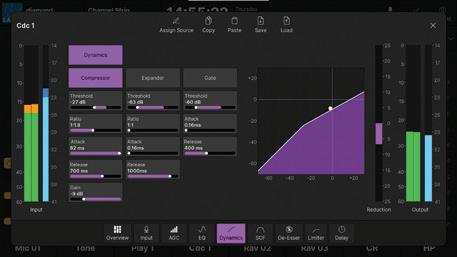
ImPulse1 is designed for small to medium single mixer applications and is offered with an allnew DSP license of 128 input channels without compromising its ST2110 capability. With a small overall form-factor, it’s immediately attractive for compact installation sites, such as outside broadcast and fly pack applications, where space is at a premium. Furthermore, it doesn’t compromise on features and DSP power; it has DSP options ranging from 128 to 384 input channels and benefits from the DSP features
from the larger ImPulse core. Calrec is continually adapting to changing production needs, with the launch of Argo, transforming how broadcasters configure and use their control surfaces and now ImPulse1 which provides powerful, less expensive options for Argo and/or Calrec Assist. Argo has been built around an expanded version of Calrec’s ImPulse and ImPulse1 cores. IP connectivity allows for processing cores to be remote from surfaces and backup redundant cores.
ImPulse1 features include a fully self-contained DSP core as well as dual AC PSUs. Twin core hardware redundancy or optional single core systems are available with ST20227 as standard. Other main ImPulse1 features include:
Lawo Upgrades diamond Console, Power Core Software
NEW SOFTWARE has been released for Lawo’s diamond broadcast mixing console, Power Core DSP engine, and VisTool graphical control interface and On-Air Designer configuration software.
Release 7.0.0 PL-001 adds
numerous additions and refinements, including software support for the new Power Core AIOX (Audio I/O Extender) device, additional DSP and metering features, and several new license options for Power Core.

New features for the diamond
broadcast console include the addition of PPM meters and media icons to the vibrant, full-colour displays in monitor sections and input source displays, Access and channel-based Gain Reduction meter for dynamics, LUX Correlation Meter, a new ‘Fader Over Press’ function that adds programmable logic functions that can execute when faders are closed, and new logic that enables operators to instantly clear DSP parameters applied to an audio source.
• Up to 672 processing paths.
• Native AES67 / SMPTE ST211030 connectivity.
• ST2110-30 connections can operate in 1 or 10Gbps mode.
• Built-in support for NMOS IS04 advertisements and IS-05 connection management.


• Max router capacity of 2,048 x 2,048.
• Up to 512 ST2110 streams – each stream can pass between 1 to 80 audio channels.

• Surface connectivity is via IP, so surfaces can be physically remote, connected over COTS networks and supplemented with Assist web UI for multioperator, remote or headless use.
Visit https://calrec.com
at the forefront of cutting-edge technology Matrox Video is a leading manufacturer of video products and components for the broadcast and media, live entertainment, and AV/IT markets. Their mission is to create innovative products and provide superior support, enabling their customers to harness the power of video to entertain, communicate and make critical decisions.
For the Power Core DSP engine, refinements include extended ‘Q’ values to help fine-tune EQ curves, a self-keyed side-chain filter for dynamics processing which excludes frequencies from its calculations, the ability to adjust the DeEsser’s active frequency, and support for up to eight AutoMix groups – a boon for morning show and talkshow producers.
Power Core Compact is a new licence choice that provides a cost-effective choice for broadcasters building small to medium studios. This expands the


total number of main Power Core license options to six, including Power Core edge I/O and Super Audio Node configurations; a console engine for large and extra-large consoles of up to 60 faders; and the MAX multipleaccess license which permits a single Power Core to provide resources to as many as four diamond consoles.
Also introduced are two new ‘addon’ licences: Conference Assign (which gives complete control over the level of the associated N-1 bus and allows inclusion or exclusion of other N-1 busses), and Aux Pan (which allows control over the panning of individual sources per Aux bus). Existing add-on license packages for GPIO, MiniMixer, N-1 and Loopback expansion continue to be offered also.
Visit https://lawo.com
24 AUDIO,
AUDIO, RADIO,
RADIO, PODCAST
PODCAST
D2N – TECHNOLOGY SOLUTIONS now supporting Matrox
www.d2n.com.au +612 9837 6748 or sales.aus@d2n.com.au
Video
ANALYZE. MONITOR. MANAGE. REAL TIME.
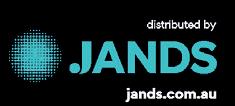
The AD600 is an essential addition to your Axient Digital professional audio setup.
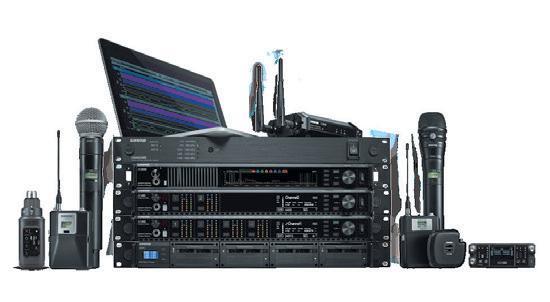
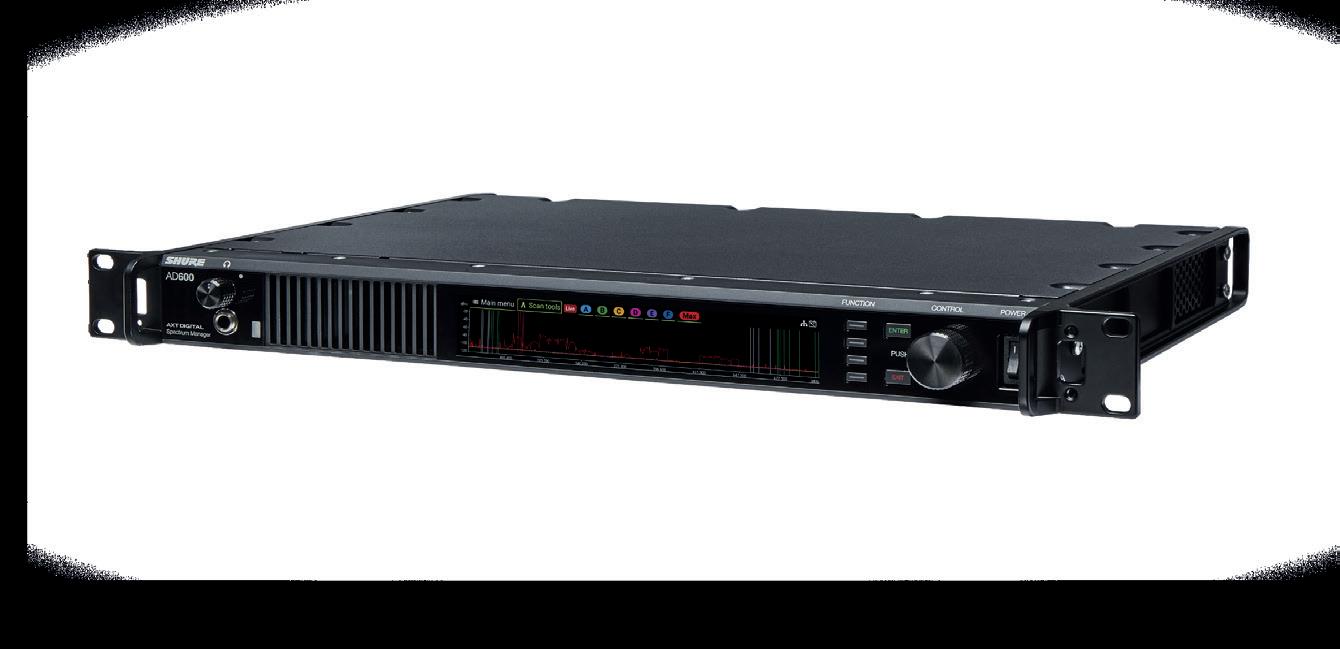

25 AUDIO, RADIO, PODCAST AUDIO, RADIO, PODCAST
All information and specifications are subject to change. © 2022 Shure Incorporated
Sky NZ Upgrades Audio with Lawo IP Technology
LAWO PARTNER and system integrator, Professional Audio & Television (PAT), has announced the supply and commissioning of a Lawo mc²56 48 fader production console to Sky New Zealand.
When the time came for Sky to replace its old Lawo mc²66 console and Nova73 TDM-based system, the team at Sky selected both PAT and Lawo to collaborate on the design, upgrade and commissioning of their new IP audio system. The new mc²56MkIII console is powered by two fully redundant, 1RU super compact Lawo A__UHD-Core audio engines.
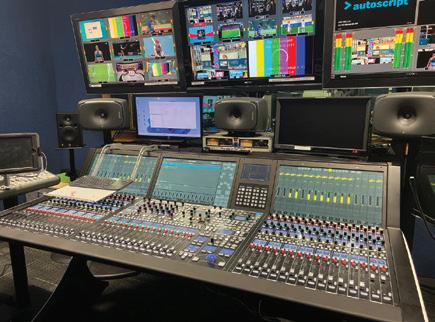
Integrated into the console is the RTW TM7 audio metering unit, giving the Sky audio operators reliable eyes on their audio. Lawo’s cloud-native management platform HOME is responsible for connecting, managing and securing all audio aspects of Sky’s live production environment and is supported by six PowerCore I/O gateway nodes with full support for ST2110, AES67, RAVENNA & DANTE.
The media network is clocked by a Meinberg M1000 with dual HPS100 High Precision PTP modules, each card offers the ability to support up to 2,048 PTP-Clients in Unicast, as well as more than 250,000 Delay Requests per second in Multicast or Hybrid mode or more than 400,000 NTP requests per second. Phase 2
of this project will see Sky’s existing Lawo mc²36 console and several Lawo V__pro8 video processors integrated into its new IP workflows.
Justin Loza, Sky NZ – Platform Owner
Broadcast Core said: “Sky have been Lawo customers since the early 2000’s and we have had a great experience with their technologies to date. When embarking on our first AoIP project, we wanted to align with a company that has a proven track record and understanding of IP technologies, has experience implementing large scale projects and solutions, and were willing to become an extended arm of the Sky team – PAT has delivered just that. Lawo and PAT have gone above and beyond to meet our requirements, built strong relationships with our staff, collaborated on design and even accepted last minute changes with no complaints and a smile on their face. We look forward to building on this successful formula in the future.”
Mike Heard, Senior Solutions Architect at PAT, commented: “When we were asked by the Sky team to join them on their migration over to IP and to replace their “tried and true” Lawo mc²66 AP console, we instantly knew what to do. This
Comrex Now Shipping BRIC-Link III
ACOMREX IS NOW SHIPPING BRICLink III. Debuted at NAB 2022, the latest model in its cost-effective IP audio codec line features a new, more powerful processor for improved reliability in addition to enhanced front panel indicators, including four buttons which will trigger contact closures by default and are configurable for autoconnections to other Comrex IP audio codecs.
BRIC-Link III includes CrossLock VPN technology, Comrex’s proprietary suite of reliability tools which offers an expanded array of techniques including improved
congestion detection, redundant transmission, forward error correction, and deadline-sensitive retransmission. Plus, with the ability to use multiple IP networks for increased bandwidth in addition to the intelligent monitoring and dynamic adjustment of data packets, CrossLock optimises audio for transmission over the public Internet and provides peace of mind to broadcast engineers. With a suite of encoding algorithms including stereo and mono linear mode, FLAC modes, AAC/HE-AAC modes, Opus, G.722 and G.711, BRIC-Link III can accommodate
RØDE VideoMicro II On-camera Mic
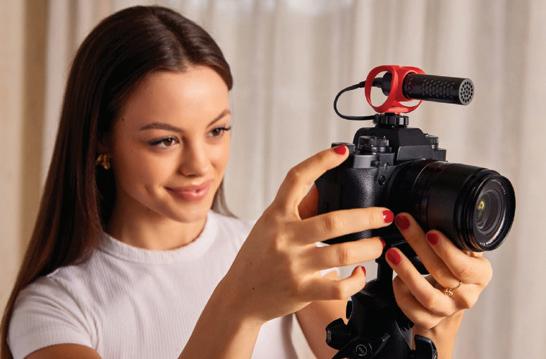
project has been the perfect example of how trust, communication and collaboration can be used to successfully deliver a project on time, on budget and with the best result possible. It is great to see another Lawo mc² console paired with Lawo UHD IP audio processing cores in service in New Zealand and a massive thank you to the entire Sky team for trusting PAT and having us along for the ride.”
Visit https://www.lawo.com and https://www. proaudiotv.com.au
a wide variety of applications. BRIC-Link IP audio codecs are commonly used in home studios, as STLs, for voice-over delivery, for sportscasting, and for many other situations that require point-topoint connections. With additional operation modes like HTTP and IP Multicast, BRIC-Link III can also function as a streaming server or send audio to multiple locations (depending on network bandwidth), making it a versatile hardware codec with an entry-level price point.
BRIC-Link III is compatible with all other Comrex IP audio codecs,

including the ACCESS codec line as well as older BRIC-Link models. It also includes EBU 3326/SIP mode for interoperability with third-party manufacturer codecs.
BRIC-Link III works with Comrex Gagl, a new service now available for remote contribution. Gagl turns any Comrex IP audio codec into a hub for up to five participants. Monthly and yearly plans are available, and a free 14-day trial is included with all new Gagl subscriptions.
Visit https://www.comrex.com
BUILDING ON its original VideoMicro, RØDE’s VideoMicro II introduces several new features for enhanced performance of oncamera audio capture.
Key features include:
• Professional-grade on-camera shotgun microphone.
• Supercardioid polar pattern for highly directional audio capture.
• RØDE’s annular line tube technology for unmatched transparency and natural, fullbodied sound.
• HELIX isolation mount system for superior protection from
knocks, bumps and handling noise.
• 3.5mm TRS output with plugand-play connectivity and no complicated controls.
• Ultra-compact and lightweight –just 39g.
• Rugged, all-metal body and premium components.
• Deluxe foam and furry windshields and cables for connecting to cameras and smartphones included.
Visit https://rode.com
26 AUDIO, RADIO, PODCAST AUDIO, RADIO, PODCAST
Unification, Cooperation, Interoperability & the Cloud
By Steve Reynolds, President, Imagine Communications

THE MEDIA SCENE as we enter 2023 is looking very exciting. There is a significant change dynamic underway, which features two critical factors in alignment: consumer demand and technology enablers.
The pandemic changed a lot for all of us, of that there is no doubt. And one of the things that happened was that we could not go out for entertainment, so we stayed in and watched television. That meant we dug more deeply into the resources available, and we saw a rapid expansion of choices for how to get our content.
Traditional channels still had their place, and I think they are going to be around for quite a while. Streaming services also prospered, although I believe there may be changes there, as more media companies offer direct-to-consumer channels and established players shift their business models — Netflix running advertising, for example.
But, we also saw a number of new entrants providing online linear channels. We called it FAST: free, ad-supported streaming television. It hit a sweet spot with consumers, not least because it offers the prospect of niche channels that people love to dip into with an ad-supported model — so no subscriptions or fees.
The demand was there, but so too were the enablers, in the form of technology. And the key here is the cloud. Using the cloud to organise and distribute media gives us the flexibility and agility to quickly respond to market demands. More importantly, it allows us to move toward unified origination.
Early forays into cloud left major content companies operating multiple silos — each focused on a particular platform or offering, and with very little commonality or communication between them. What the industry learned from this was that to efficiently respond to commercial opportunities as they arise, you need to be able to switch resources or interconnect workflows. Unified
origination means that content companies can control costs while maintaining the quality of their output.
Another significant shift here is in monetising all this. If you are simply responsive — other people are streaming or starting FAST channels, so I guess we should too - then you have no plan to ensure you get a fair return across all your content, and it is hard to pin down which channels are making you money and which are not.
A transformation that will gather pace in 2023 builds on the unified origination concept and brings all the advertising together in one place. One sell to the advertiser, one campaign, one definition of audience views — but realisation across all platforms. That model is transformative because it gives advertisers the certainty of measuring audiences directly in terms of views, like a digital platform, but with all the premium values of television advertising —such as frequency and pacing — being associated with appropriate content and more. Intelligent ad servers can make millions of placement decisions in seconds to ensure that every bit of the advertising inventory, across every output, achieves its maximum revenue. This, too, points toward the cloud as the place to deliver. It has the processing power for all this decision-making and the connectivity to deliver content and commercials in a seamless flow to any platform anywhere.
The cloud is becoming more important for another reason: supply chain issues. We have long accepted that virtually all broadcast technology now is founded in clever software running on IT industry-standard hardware: processors, storage and switches. But we are still in the midst of a supply chain crisis for exactly those products.
The global chip shortage has had a huge impact across many industries. For us in the media, it means that the old idea of a box per function has been forced
out because it is still hard to get those boxes. And to put it bluntly, AWS or Microsoft Azure simply has a great deal more purchasing power than a broadcaster, or even a large vendor like Imagine. It makes good business sense to put as much processing in the cloud as possible, because you can agree on the right SLA for broadcast services, get access to the capabilities to run those services, and connect directly to both advertisers and consumers through the cloud. Operations in the cloud, for the cloud, and to the cloud. I have one more prediction for 2023 (and beyond), which is that we are going to be talking a lot more about interoperability. The media industry has already seen a lot of work on this front with initiatives such as the AIMS roadmap and SMPTE ST 2110. But as we become a specialised branch of the IT industry, so will we have to embrace other applications.

Our industry continues to move toward software architectures and virtualisation. That brings huge opportunities for efficiencies, not least as we integrate content workflows with the business systems that surround them. In advertising, for example, broadcasters already have a sales front end and they have billing and CRMs. Those applications work for them, and they do not want the disruption of change.
To maximise efficiencies, we need to make it as simple as possible to integrate mediaspecific workflows with business systems, such as ad decisioning and playlist automation. This is why Imagine has made a significant investment in developing all the APIs that customers and partners will need to integrate into these other systems.
More than that, we have published these APIs so that systems integrators, whoever they are, can see the potential for massive efficiencies through tightly bound
“To maximise efficiencies, we need to make it as simple as possible to integrate mediaspecific workflows with business systems, such as ad decisioning and playlist automation. This is why Imagine has made a significant investment in developing all the APIs that customers and partners will need to integrate into these other systems”
systems. Imagine has adopted Swagger as our online repository for APIs, but other choices exist. Whatever you choose, the key to a thriving future is to enable open and easy-to-use models for integration, so we can all move forward faster.
The idea that it is “only software” and it can be made to do anything still prevails. But for that to succeed, we must all be open about how to do it. Cooperation is going to be the watchword for 2023.
Visit https:// imaginecommunications.com
CONTENT DELIVERY CONTENT DELIVERY 27 CONTENT DELIVERY
GatesAir Expands Outdoor Transmitter Series

FOLLOWING THE RELEASE GatesAir’s Maxiva PMTX-1 integrates a low-power transmitter or transposer/translator to support a diverse array of VHF and DAB use cases, from filling coverage gaps to delivering focused broadcast content as a spot transmitter. Its rugged, telecom-grade enclosure makes the PMTX-1 impervious to weather elements, with adaptability to any climate or outdoor environment thanks to its sealed protective shell. The VHF version covers channels 7 through 13 and is mainly marketed for use in North America and the Asia-Pacific (APAC) region. In mixed spectrum networks, broadcasters can take in a UHF signal and translate it to a VHF output, for example.
The DAB version is viable for countries that have adopted DAB/DAB+ as its digital radio standard in regions outside North America, with especially strong business opportunities in Europe and APAC. In Europe, the PMTX-1 simplifies DAB broadcast service for tunnels, complex terrain that limits coverage, and areas shadowed by buildings and other obstacles.
According to Ted Lantz, Vice President, Product Line Management, GatesAir, “If you look at DAB networks in Europe, we have many customers seeking better ways to add lowpower transmitters to road tunnels to ensure uninterrupted service for travellers. They also want cost and power-efficient options to install low-power transmitters and gap fillers outdoors in very remote, often harsh climates to cover small villages and populations. The PMTX-1 provides a host of new deployment options to simplify network coverage and penetrate these very hard-to-reach areas in ways that make financial sense.”
Lantz cites one example where broadcasters
can save money by using the pole-mount installation option.
“We are working with a customer in the US that intends to add a single-bay VHF dipole antenna to the side of a cellular tower and mount the PMTX-1 on an adjacent pole,” he said. “There are no facility costs involved; the broadcaster is simply renting the tower space at a very reasonable cost.”
In addition to pole-mount configurations, the PMTX-1 also mounts securely to building structures and traditional broadcast towers, providing broadcasters and network operators with endless outdoor installation scenarios. That makes the PMTX-1 suitable for single-frequency network (SFN) configurations where multiple transmitters operate on the same frequency to maximise signal penetration. The PMTX-1 is also available for analogue TV networks (100W), with a field-upgradeable path to DTV (50 W for ATSC, DVB-T, DVB-T2 and ISDB-Tb).
Field operations are also simplified through the Maxiva PMTX-1’s one-piece design, which removes all moving parts and air filters to eliminate most maintenance requirements. The sealed metal housing efficiently removes heat from the internal circuitry and performs well in extreme temperatures and humidity.
The PMTX-1 VHF and DAB version is almost analogous to the UHF version in design characteristics and componentry, with the
Telestream Lightspeed Captures SMPTE 2110
TELESTREAM HAS ANNOUNCED the latest release of its Lightspeed Live Capture multi-channel onpremise ingest solution. The new version, 3.5, enables broadcast organisations to connect the live video capture software over IP networks locally or remotely using SMPTE 2110 with NMOS, NDI sources and SRT sources. The new methods augment the Transport Stream and RTMP IP formats

Lightspeed Live Capture already supports.
“As global demand for VOD and live streaming continues to grow, it’s critical that the workflows
to create it are also able to take advantage of the flexibility and simplicity of IP networks,” said Telestream Senior Director of Product Management Scott Matics. “With this connectivity, broadcast engineers and operations staff can capture and route high resolution IP streams around to multiple systems, onsite or remote, incredibly efficiently. Add to that the unprecedented integration with our Vantage Media Processing Platform plus an expanded Avid workflow and you can see how significant this leap forward is for network capture.”
mask filter and power amplifier as the only exceptions. The PMTX-1’s optional RF receiver input supports flexible options for translator and transposer configurations and will reliably regenerate content for very targeted coverage areas at low power levels. Broadcasters can add optional inputs to support DVB-S/ S2 receivers and IP transport streams, and accept broadcast content and data from alternate sources.
Visit https://gatesair.com
The new connectivity methods provide reliable, low latency, frame accurate connections over common IP network implementations while preserving source synchronisation. NMOS support for SMPTE ST 2110 adds a control plane that makes the infrastructure simpler to operate. The implementation comes with full support for the ISO4 and ISO5 specifications. Using the ISO4 specifications within NMOS, Lightspeed Live Capture can query for information about other devices.
The software also registers
its capabilities and discovers other devices where live capture workflows might originate. ISO5 is used by Lightspeed Live Capture to perform the setup and removal of media flows between itself and the sending device. Telestream has also enhanced segmented recording capabilities with the addition of several new methods such as time, timecode, and duration-based segmenting. Integration and support for Avid workflows have also been expanded with new metadata options in the Capture action.
Visit http://www.telestream.net
28 CONTENT DELIVERY CONTENT DELIVERY ADVERTISER INDEX Amagi…………………………………………………………….9 AV Group…………………………………………………………….6 Blonde Robot………………………………………………..5,11,29 D2N Technology Solutions……………………………………24 Digistor…………………………………………………………OBC Hollyland Australia..…………………………………………..IFC Jands…………………………………………………………….25 LiveU…………………………………………………………….14 NABShow………………………………………………………IBC Videndum……………………………………………………..3 Videocraft………………………………………………….FC,9 ADVERTISER INDEX
Broadpeak Achieves Video Streaming at 725Gbps
BROADPEAK RECENTLY
ANNOUNCED the launch of its new BkS450 high-performance video streaming software. When running on a third-gen Intel Xeon Scalable processor, the BkS450 software enables video service providers to deliver low-latency 4K and 8K video streaming services, VR content, and other bandwidthintensive offerings at a reduced cost while consuming significantly less power than traditional video servers.
Leveraging an ultra-efficient usage of hardware resources, the
BkS450 delivers video services at 725Gbps in HTTP on servers consuming 900 Watts, reducing the power required to stream 1Gbps by a factor of four compared with previous-generation video streaming solutions. Broadpeak obtained this measurement using a benchmark tool developed in collaboration with Intel, recreating a production environment. This collaboration demonstrates the power of software optimised with Intel Xeon CPUs. The two companies say they will continue to push the performance-per-
Watt envelope toward a more sustainable future.
Broadpeak’s BkS450 video streamer also features a highdensity design that saves space in datacenters. Available as a container running on off-theshelf hardware, the BkS450 eliminates the need for operators to use proprietary components, speeding up the time to market for new video streaming services while enhancing operators’ flexibility, operational efficiency, and cost savings. The BkS450 video streamer is future-proof,
Xytech Upgrades Media Operations Platform

XYTECH HAS ANNOUNCED the latest version of its Media Operations Platform - the Granite Release.

As a powerful command centre for content producers across media, broadcast and technology companies, media teams can implement the Granite Release to manage the production and delivery of visual media efficiently, on-schedule and on-budget. With over 350 user-hours logged by our beta testing clients for the Granite Release, the latest and most stable release to-date, Xytech enables the management of people, equipment, resources, facilities, and logistics, as well as the automation of manual operations, making it a powerful back-end operational solution for media companies.
The Media Operations Platform manages the entire media production process for companies of various sizes in multiple industries and for any distribution platforms by automating manual tasks and triggering workflows through a centralised command centre. Organisations can get a single view of Personnel Management, Media Asset Management, Production
Management, Media Transmission, and Media Workflow, enabling teams to stay on task as a cohesive unit to meet deadlines. The Media Operations Platform is an evolution of Xytech’s operations software and ScheduAll, which are deployed in nearly 500 of the world’s largest and well-known media producers.
The Personnel Management application, one of five applications within the Media Operations Platform, provides easy scheduling and visibility across an entire company on multiple platforms. Media teams can easily schedule shifts, and manage payroll, entitlement tracking, timecard management, approval workflows and remote crewing. Media Asset Management, another application on the Platform, organises, shares and tracks media assets through managing and tracking physical and digital media, configurable metadata, index search, title management, display keyframes and proxies, and QC session management applications.
The Production Management application includes configurable scheduling views, calendar scheduling, rental management,
natively supporting all of the latest HTTP protocols – as well as DASH and HLS low-latency streaming formats.

The new caching software engine built into the BkS450 will also extract maximum performance from more modest and cost-effective hardware configurations, including existing CDN deployments. This innovation unlocks CDN capacity across the board and better uses resources.
Visit https://broadpeak.tv
equipment tracking, and can maintain outsourcing options and pricing, bidding and budgeting. The Media Transmission application provides a stable and untethered remote monitoring experience through automated feed management, device automation, bandwidth utilisation and accurate billing, delivered on any device connected to the internet.
The Media Workflow application enables media collaboration from anywhere and accelerates content turnaround with automated tasks. From media ingest, search, and logging to editing, distribution and publishing, the entire production process is streamlined. Dispersed teams are enabled to create better content faster, and deliver to more outlets and devices, ultimately maximising the value of the content. With 20 platform integrations, 60+ customisable SaaS integrations and 40+ custom integrations to proprietary business systems, Xytech empowers each team member with the flexibility to create, click and connect from anywhere. Visit

POWERFUL, FLEXIBLE LIVE STREAMING OUT-OF-THE-BOX
29 CONTENT DELIVERY CONTENT DELIVERY 3
Wirecast Gear 3 is a family of turnkey live video streaming and broadcast production appliances.
Live video production simplified
Fully integrated into a single device, Gear 3 provides plug-in-and-go live-streaming and video production for up to five HD or 4K SDI, or four HDMI sources.
Live sports, news broadcasting, worship streaming, and live/virtual event production is now available in one ready-to-go, convenient, rack-mountable unit.
https://www.xytechsystems.com
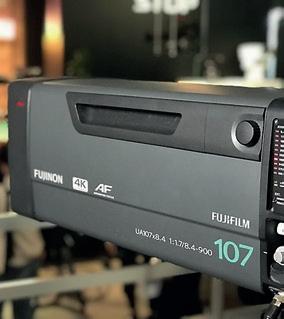



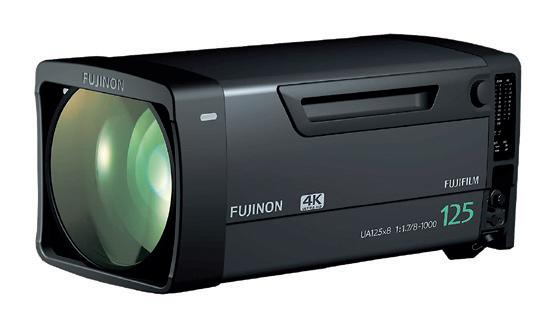
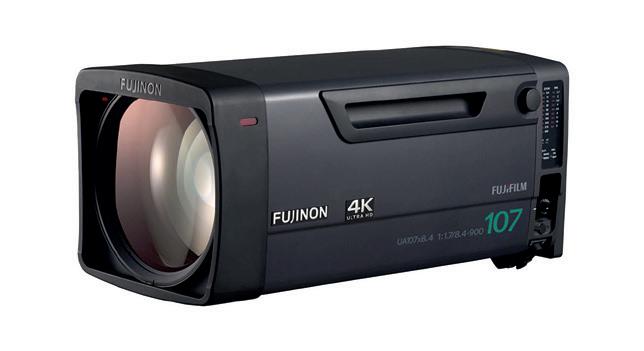

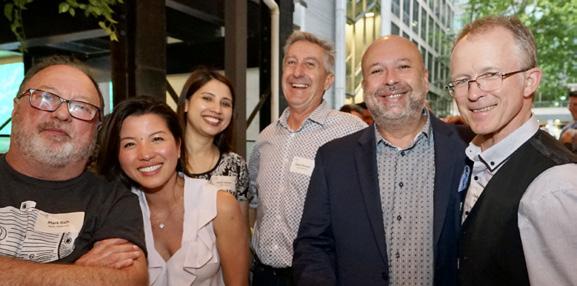



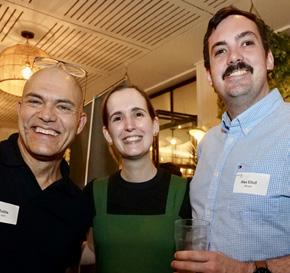
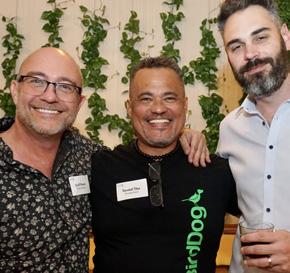

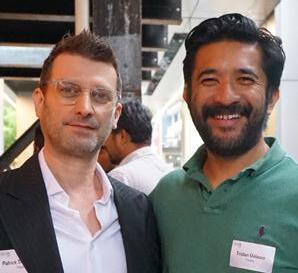
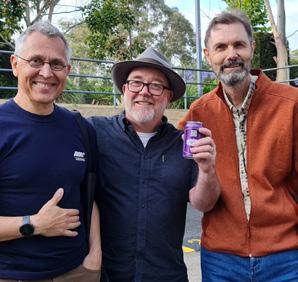
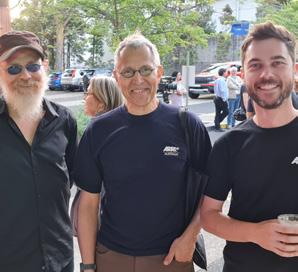
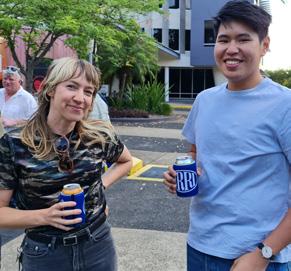
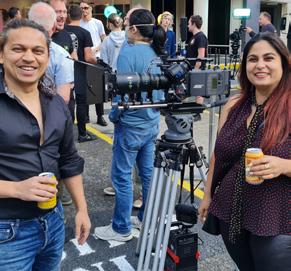
30 INDUSTRY FOCUS 004 >> ARRI XMAS >> 003 >> ARRI XMAS >> 001 >> ARRI XMAS >> 002 >> ARRI XMAS >> 012 >> DIGISTOR XMAS >> 007 >> ARRI XMAS >> 005 >> ARRI XMAS >> 006 >> ARRI XMAS >> 011 >> DIGISTOR XMAS >> 010 >> DIGISTOR XMAS >> 008 >> ARRI XMAS >> 009 >> DIGISTOR XMAS >>



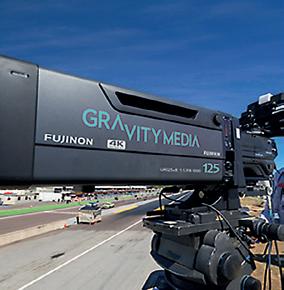
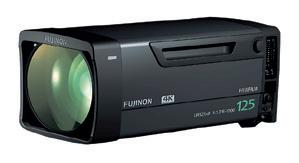

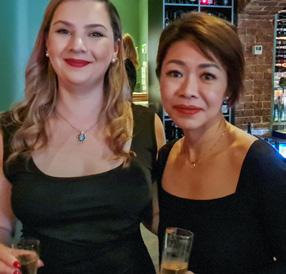
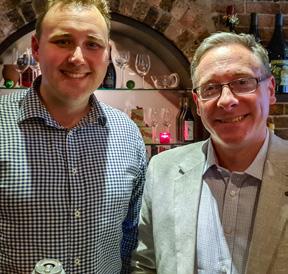
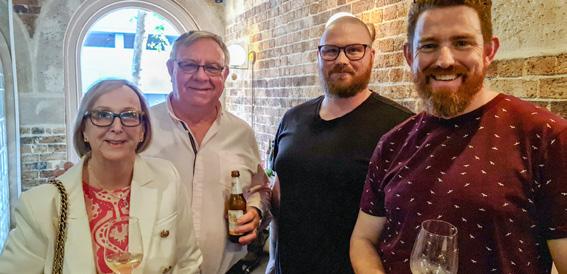
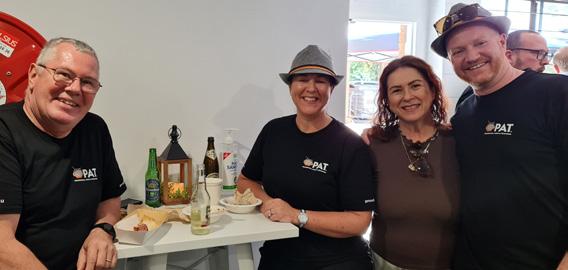
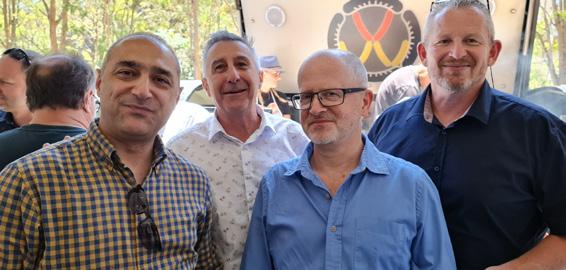
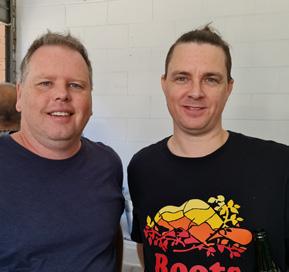
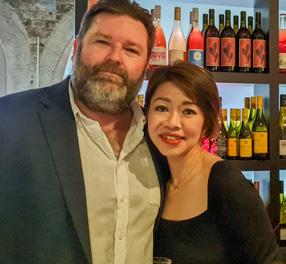


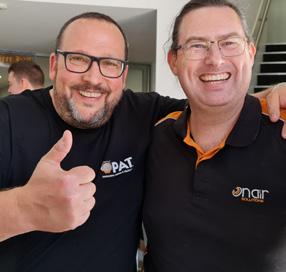

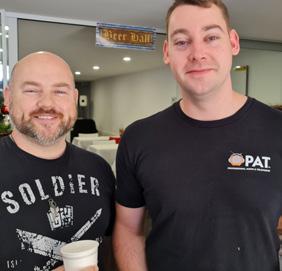


31 INDUSTRY FOCUS INDUSTRY FOCUS
021 >> ROSS VIDEO XMAS >> 024 >> ROSS VIDEO XMAS >> 025 >> ROSS VIDEO XMAS >> 026 >> ROSS VIDEO XMAS >>
022 >> ROSS VIDEO XMAS >>
023 >> ROSS VIDEO XMAS >>
013 >> DIGISTOR XMAS >>
014 >> DIGISTOR XMAS >>
018 >> PAT XMAS >>
017 >> PAT XMAS >>
015 >> PAT XMAS >>
016 >> PAT XMAS >>
020 >> PAT XMAS >>
019 >> PAT XMAS >>






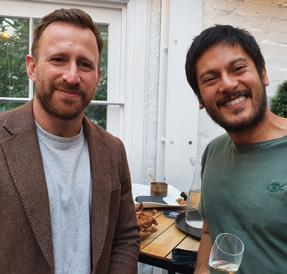
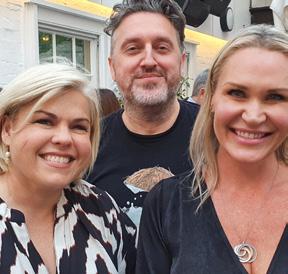
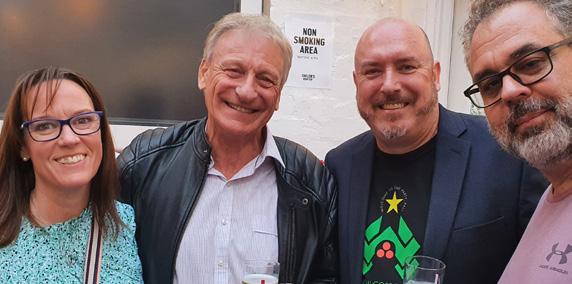
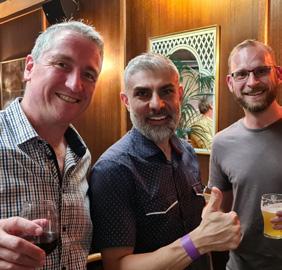
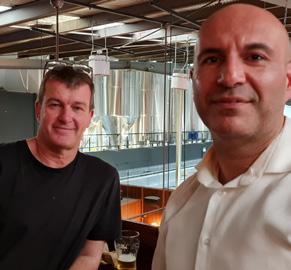
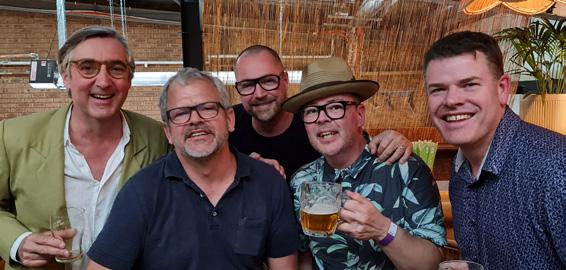
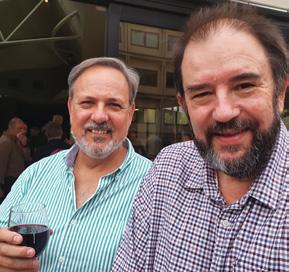



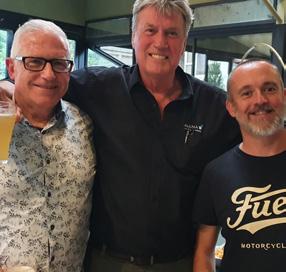
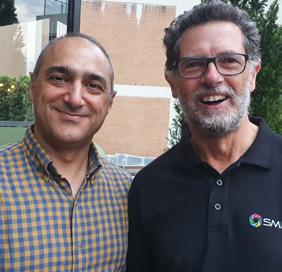
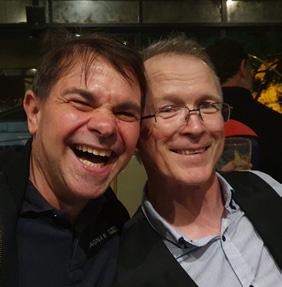
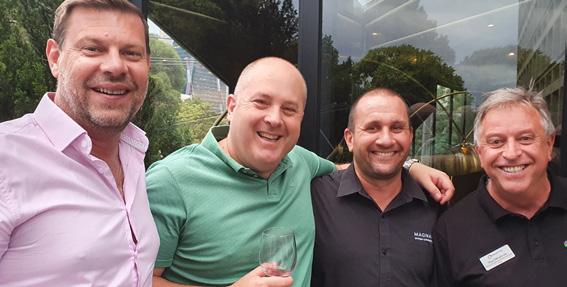


32 INDUSTRY FOCUS INDUSTRY FOCUS 036 >> TELSTRA-AKAMAI XMAS >> 039 >> TELSTRA-AKAMAI XMAS >> 040 >> TELSTRA-AKAMAI XMAS >> 037 >> TELSTRA-AKAMAI XMAS >> 038 >> TELSTRA-AKAMAI XMAS >> See more photos at www.facebook.com/phil.sandberg 027 >> SMPTE XMAS >> 028 >> SMPTE XMAS >> 032 >> TECHTEL XMAS >> 031 >> SMPTE XMAS >> 029 >> SMPTE XMAS >> 030 >> SMPTE XMAS >> 035 >> TECHTEL XMAS >> 033 >> TECHTEL XMAS >> 034 >> TECHTEL XMAS >>
SEE WHAT COMES NEXT
Join us at NAB Show, THE GLOBAL EVENT for the broadcast, media and entertainment industry. Preview powerful technology, best-in-breed products and innovative solutions for your every next.
And — it’s our Centennial… an incredible, must-not-miss celebration! Exclusive international benefits and private-access perks are all yours. REGISTER NOW with code MP02.
ONE EXHILARATING EXPERIENCE. FOUR UNIQUE DESTINATIONS.
CREATE.
All things preproduction to post.
CONNECT.
All things distribution and delivery.
CAPITALIZE. All things reach and ROI.
NABShow.com

INTELLIGENT CONTENT.
All things data, AI and automation.

At EditShare we empower storytellers to craft and share their stories with solutions that enable collaboration, improve the production process and remove tedious tasks that get in the way of creativity –freeing storytellers to do what they love. Find




edit & manage video on-prem or in the cloud © 2022 EditShare LLC | sales@editshare.com
AMAZING
Flexible Scalable Open Call Digistor today on 02 9431 6000 or visit digistor.com.au/editshare to discuss how EditShare solutions can work for your team or to arrange a demonstration. enquiries@digistor.com.au
out more: editshare.com Store,
CREATE
TOGETHER


























































































































































